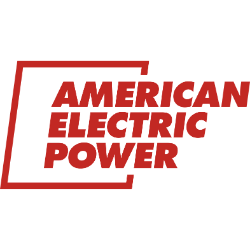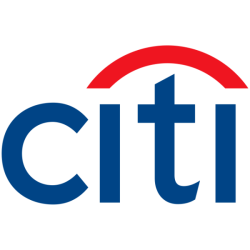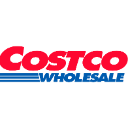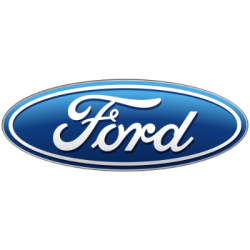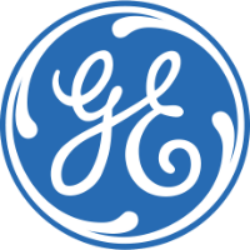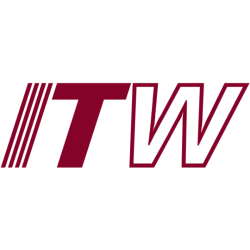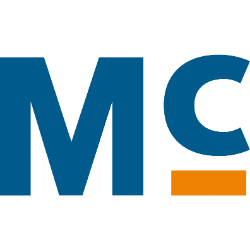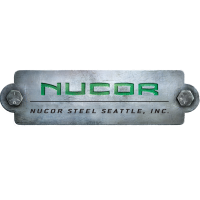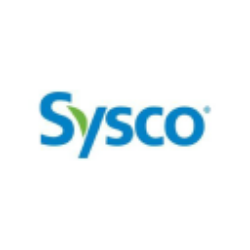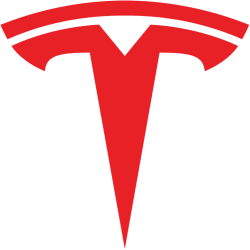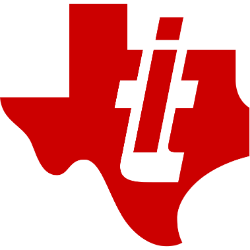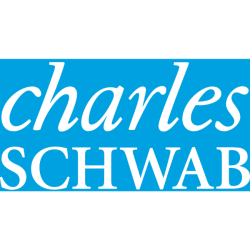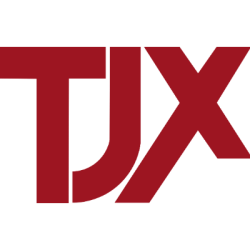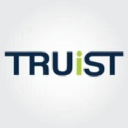Updated: June 7, 2025

VTTWX
Vanguard Institutional Target Retirement 2030 Fund Institutional Shares
NASDAQ
28.83
-0.24

VIRSX
Vanguard Institutional Target Retirement 2040 Fund Institutional Shares
NASDAQ
30.89
-0.36

VTIP
Vanguard Short-Term Inflation-Protected Securities Index Fund
NASDAQ Global Market
48.87
0.01
We have not found the stock you are looking for
Ticker
Loading
Market Cap
Loading
Revenue
Loading
EPS
Loading
PE Ratio
Loading
Volume
Loading
Dividend
Loading
Week Range
Loading
Beta
Loading
Frameworks
Name
Score
Company Overview
Loading
Tesla, Inc.
Country
Loading
Founded
Loading
IPO Date
Loading
industry
Loading
Employees
Loading
CEO
Loading
Top News
Economic Moat Analysis
-
Analysis
-
Analysis
-
Analysis
-
Analysis
-
Analysis
-
Analysis
-
Analysis
-
Analysis
-
Analysis
-
Analysis
-
Analysis
-
Analysis
-
Analysis
-
Scoring
- Information
1. 10Y Growth Analysis
Score: 8.5 (Strong)
Tesla demonstrates solid growth prospects across the short, medium, and long term, driven by innovation, market expansion, and strategic positioning in the EV and energy sectors.
2. Scenario Analysis
Score: 7.4 (Strong)
The analysis indicates that TSLA is well-positioned to handle various scenarios, particularly in technological advancements and market expansion. However, economic downturns and intense competitive pressures pose notable challenges. TSLA's ability to innovate and adapt is a strong asset, but external economic and regulatory factors could impact its performance. Score without stress scenario: 7.7 – Resilient
3. Risk & Opportunities
Score: 7.0 (Strong)
Tesla exhibits a balanced risk-to-opportunity profile, with notable strengths in product expansion and technological advancements. However, it faces challenges such as regulatory scrutiny and increasing competition. The company's ability to navigate supply chain disruptions and geopolitical issues while leveraging its innovation and market expansion could drive future growth and maintain its competitive edge.
4. Economic Moat
Score: 8.0 (Strong)
Tesla's overall score reflects its strong competitive advantages, particularly in network effects and intangible assets, which are supported by efficient scale and cost advantages. The company's robust brand, innovative culture, and expansive infrastructure position it well for sustained growth.
5. Business Model
Score: 8.5 (Strong)
The overall score reflects Tesla's strong business model characterized by its innovative products, strong brand, and strategic market positioning. Tesla's ability to maintain leadership in the EV sector while diversifying into energy solutions positions it well for sustained growth. The company's focus on technological advancement and direct customer engagement enhances its competitive advantage.
6. Management Analysis
Score: 8.6 (Strong)
Tesla's management demonstrates strong leadership qualities, strategic foresight, and a proven track record of innovation and adaptability. This positions the company well for future growth and success, despite the challenges of a competitive and rapidly evolving industry.
7. BCG Matrix
Score: 8.0 (Strong)
Tesla's diverse product portfolio demonstrates strong market leadership, especially in the automotive and energy sectors. The company's focus on innovation and infrastructure has secured its position as a leader, though some emerging products face challenges that could impact future growth.
8. SWOT Analysis
Score: 7.8 (Strong)
Tesla demonstrates significant strengths, particularly in brand recognition, technological leadership, and its commitment to sustainability. These are countered by balanced weaknesses, including production challenges and regulatory scrutiny. Opportunities in expanding EV markets and renewable energy solutions are substantial, while threats from competition and economic conditions are notable but manageable.
9. Porter's 5 Forces
Score: 6.5 (Balanced)
Tesla's strategic position is characterized by moderate challenges in industry rivalry and bargaining power of suppliers, with relatively low threats from new entrants and substitutes. The company's strong brand loyalty and technological leadership provide a competitive advantage.
10. PESTLE Analysis
Score: 7.9 (Strong)
Tesla's overall score reflects a predominantly positive strategic position influenced by strong technological advancements and environmental commitments. Political and social factors also provide favorable conditions, while economic and legal challenges present balanced impacts.
11. ESG Analysis
Score: 7.4 (Strong)
Tesla demonstrates a strong commitment to environmental sustainability, with significant achievements in reducing its carbon footprint and advancing resource efficiency. Socially, the company has made progress in labor practices and diversity but faces ongoing challenges. Governance practices show mixed results, with areas for improvement in board composition and transparency.
12. Company Milestones
Score: 8.6 (Strong)
No summary available.
Final Overall Score
Score: 7.9 (Strong)
The Final Overall Score of 7.9 for Tesla, Inc. (TSLA) indicates a strong performance and positive outlook for the stock. Here’s a concise breakdown: 1. **General Performance**: Tesla has demonstrated robust growth, both in terms of revenue and market share. The company’s consistent delivery numbers and expanding global footprint highlight its effective business strategy. 2. **Strengths**: – **Innovation Leadership**: Tesla continues to lead in electric vehicle (EV) technology and innovation, maintaining a competitive edge in the rapidly growing EV market. – **Brand Recognition**: With strong brand loyalty and recognition, Tesla enjoys a premium valuation in the automotive sector. – **Financial Health**: The company’s balance sheet shows improved financial metrics, with increasing revenues and better profit margins, which contribute positively to its stock performance. 3. **Outlook**: – **Market Potential**: The global shift towards renewable energy and sustainability provides Tesla with significant growth opportunities, especially as governments push for greener transportation solutions. – **Expansion Plans**: Tesla’s plans for new gigafactories and product lines, such as energy storage and solar, are likely to drive future growth and diversification. – **Technological Advancements**: Continued advancements in autonomous driving technology and battery efficiency are expected to enhance Tesla’s market position. Overall, the score reflects investor confidence in Tesla’s ability to sustain its growth trajectory and capitalize on emerging opportunities in the EV and renewable energy sectors.
Future Outlook
As of the latest data available up to October 2023, Tesla (TSLA) has shown strong performance influenced by various factors including its product innovation, market expansion, and financial results. When considering the future outlook for Tesla’s stock, several key areas should be kept in mind: 1. **Financial Performance**: Tesla’s revenue growth, profitability, and cash flow generation will continue to be significant indicators. Analysts often focus on Tesla’s ability to maintain or improve margins, particularly as it scales its operations and introduces new models. 2. **Product and Technology Innovation**: Tesla’s ability to innovate, particularly in electric vehicles (EVs), battery technology, and autonomous driving, remains crucial. The company’s progress in these areas can significantly affect its competitive advantage and market share. 3. **Market Expansion**: Tesla’s efforts to expand its presence in international markets, especially in Asia and Europe, can drive future growth. The company’s ability to navigate regulatory environments and local competition will be important. 4. **Industry Trends**: The broader adoption of EVs, advancements in renewable energy, and government policies promoting sustainable transportation are positive trends for Tesla. However, increased competition from both traditional automakers and new EV startups poses a challenge. 5. **Economic Environment**: Macroeconomic factors such as interest rates, inflation, and consumer confidence can impact Tesla’s stock. Additionally, supply chain issues and raw material costs are relevant considerations. 6. **Investor Sentiment**: Market perception and investor sentiment can be volatile and are often influenced by news, earnings reports, and broader market trends. Tesla’s stock has historically shown significant volatility. Overall, the future outlook for Tesla’s stock combines optimism about its technological leadership and growth potential with caution regarding competitive pressures and macroeconomic uncertainties. Investors should continuously monitor these factors and adjust their expectations accordingly.
3-Year Growth Prospects
Score: 8.0 – Steady
– Expansion of Production Capacity: Tesla’s plans to increase production capacity, including new Gigafactories, are set to boost output significantly.
Example: *The upcoming Gigafactory in Texas is expected to streamline production and increase vehicle output by the end of 2025.*
– Product Diversification: Introduction of new vehicle models and energy products diversifies Tesla’s portfolio, catering to a broader market.
Example: *The anticipated release of the Cybertruck and the expansion of solar roof products.*
– Technological Advancements: Continued investment in autonomous driving technology and battery innovation enhances competitive edge.
Example: *Tesla’s Full Self-Driving (FSD) beta continues to evolve with enhanced functionalities.*
– Strong Brand Loyalty: Tesla’s brand strength and customer loyalty contribute to sustained demand and market presence.
Example: *High pre-order numbers for new vehicle models demonstrate strong consumer interest.*
– Regulatory Support: Global regulatory trends favoring electric vehicles (EVs) provide a conducive environment for growth.
Example: *Increased government incentives for EVs in key markets like the U.S. and Europe.*
5-Year Growth Prospects
Score: 8.5 – Steady
– Market Penetration: Increased market share in existing and new regions solidifies Tesla’s position as a global leader.
Example: *Expansion into emerging markets such as India and Southeast Asia.*
– Energy Solutions Growth: Growth in Tesla’s energy division, including solar and energy storage, presents new revenue streams.
Example: *The deployment of Powerwall and MegaPack solutions to utilities and residential customers.*
– Strategic Partnerships: Collaborations with other tech firms and automakers enhance technological capabilities and distribution networks.
Example: *Partnerships with battery suppliers and software companies to enhance product offerings.*
– Sustainability Initiatives: Commitment to sustainability attracts environmentally conscious consumers and investors.
Example: *Tesla’s goal to achieve net-zero emissions across its operations by 2030.*
– Economic Conditions: Favorable economic conditions and rising oil prices increase demand for cost-effective EV solutions.
Example: *Higher gasoline prices lead to increased consumer interest in electric vehicles.*
10-Year Growth Prospects
Score: 9.0 – High
– Dominance in EV Market: Tesla is positioned to be a dominant player in the EV market, potentially leading in both sales and technological innovation.
Example: *Continued leadership in autonomous driving technology and EV range capabilities.*
– Next-Generation Technologies: Development of next-generation technologies, such as advanced batteries and AI, could revolutionize the industry.
Example: *Research into solid-state batteries and AI-driven manufacturing processes.*
– Increased Global Presence: Global expansion strategy increases Tesla’s footprint and competitiveness across continents.
Example: *Establishment of manufacturing and R&D centers in strategic locations worldwide.*
– Enhanced Energy Ecosystem: A fully integrated energy ecosystem, from generation to consumption, positions Tesla as a leader in sustainable energy.
Example: *Comprehensive solutions combining solar, storage, and electric vehicles.*
– Robust Financial Performance: Strong financial health supports ongoing innovation and expansion activities.
Example: *Consistent revenue growth and profitability enable reinvestment into R&D.*
Overall Score: 8.5/10
Tesla demonstrates solid growth prospects across the short, medium, and long term, driven by innovation, market expansion, and strategic positioning in the EV and energy sectors.
Future Outlook
Tesla’s future outlook is promising, with steady growth expected over the next decade. The company’s focus on technological advancements, strategic market penetration, and sustainable energy solutions positions it well to capitalize on global trends favoring clean energy. As Tesla continues to innovate and expand its global presence, it is likely to maintain its leadership position in the EV market and beyond. With a robust financial foundation, Tesla is well-equipped to navigate challenges and seize opportunities in the evolving automotive and energy landscapes.
Scenario 1: Economic Downturn
Score: 6.5 – Mixed
– Reduced consumer spending: TSLA’s reliance on high-end vehicles could be a risk if discretionary spending decreases.
*Example: During the 2008 financial crisis, luxury car sales declined significantly as consumers prioritized essential spending.*
– Supply chain disruptions: Global supply chain issues could affect production timelines and costs.
*Example: Recent semiconductor shortages have impacted automotive production worldwide, causing delays and increased costs.*
– Lower investment in infrastructure: Delayed infrastructure projects could stall demand for electric vehicles.
*Example: Reduction in government spending on EV charging infrastructure could slow adoption rates.*
– Increased competition for limited resources: Scarcity of key materials like lithium could drive up production costs.
*Example: Lithium prices surged in 2021 due to increased demand from battery manufacturers.*
– Pressure on stock prices: Economic uncertainty could lead to volatility in TSLA’s stock value.
*Example: TSLA’s stock saw significant fluctuations during the COVID-19 pandemic due to market instability.*
Scenario 2: Technological Disruption
Score: 8.5 – Resilient
– Advancements in battery technology: Innovations could lower costs and increase vehicle range.
*Example: TSLA’s development of the 4680 battery cell promises higher energy capacity and reduced costs.*
– Autonomous driving technology: Leadership in self-driving tech could provide a competitive edge.
*Example: TSLA’s Full Self-Driving (FSD) technology continues to evolve, with beta testing expanding in multiple regions.*
– Energy storage solutions: Diversification into energy storage could open new revenue streams.
*Example: TSLA’s Powerwall and Megapack products are gaining traction as renewable energy storage solutions.*
– Integration of AI and machine learning: Enhancing vehicle functionalities could improve user experience.
*Example: TSLA’s AI Day showcased advancements in AI-driven vehicle management systems.*
– Expansion into new tech domains: Diversifying beyond automotive could mitigate risks.
*Example: TSLA’s entry into solar energy and energy solutions reflects its strategic diversification.*
Scenario 3: Regulatory Changes
Score: 8.0 – Resilient
– Stringent emissions standards: Increasing regulations could boost demand for TSLA’s zero-emission vehicles.
*Example: EU’s Green Deal aims to cut emissions, favoring EV manufacturers like TSLA.*
– Government incentives: Incentives for EV purchases could enhance market penetration.
*Example: The U.S. federal tax credit for EV buyers supports TSLA’s sales growth.*
– Changes in trade policies: Tariff changes could impact supply chain costs and import/export dynamics.
*Example: U.S.-China trade tensions previously affected TSLA’s manufacturing and pricing strategy.*
– Safety and data regulations: Compliance with new standards could require significant adjustments.
*Example: New data privacy laws in Europe might necessitate changes in TSLA’s data handling practices.*
– Support for renewable energy: Policies promoting renewables could benefit TSLA’s energy products.
*Example: Biden’s infrastructure plan includes significant investments in clean energy, aligning with TSLA’s goals.*
Scenario 4: Market Expansion
Score: 9.0 – Robust
– Emerging markets: Expansion into markets like India could provide substantial growth opportunities.
*Example: TSLA’s planned entry into India targets a large and rapidly growing automotive market.*
– Increased urbanization: Rising urban populations drive demand for sustainable transportation solutions.
*Example: Increasing population density in cities like Shanghai fuels demand for TSLA’s EVs.*
– Rising environmental awareness: Growing eco-consciousness boosts demand for TSLA’s zero-emission vehicles.
*Example: TSLA’s brand is synonymous with sustainability, appealing to environmentally conscious consumers.*
– Expansion of product portfolio: Diversifying product offerings strengthens market presence.
*Example: TSLA’s Cybertruck and Semi expand its product range, catering to different market segments.*
– Strategic partnerships: Collaborations can enhance technological and market capabilities.
*Example: TSLA’s partnerships with battery suppliers like Panasonic ensure a steady supply chain.*
Scenario 5: Competitive Pressure
Score: 7.0 – Resilient
– Increased EV competition: More players in the EV market could pressure TSLA’s market share.
*Example: Companies like Rivian and Lucid Motors are emerging as formidable EV competitors.*
– Technological advancements by competitors: Rivals could challenge TSLA’s tech leadership.
*Example: GM’s Ultium platform signifies significant progress in EV technology.*
– Pricing pressure: Aggressive pricing by competitors might necessitate adjustments in TSLA’s pricing strategy.
*Example: Competitive pricing from traditional automakers like Ford’s electric models impacts TSLA’s market strategy.*
– Brand loyalty challenges: Maintaining brand loyalty as more options become available is crucial.
*Example: TSLA’s strong brand loyalty is tested by increasing market choices.*
– Supply chain competition: Competition for battery materials and components could impact costs.
*Example: Increased demand for battery components has led to competition among EV manufacturers.*
Scenario 6: Stress Scenario
Score: 5.5 – Mixed
– Severe economic recession: A global recession could severely impact sales and revenue.
*Example: The 2020 economic downturn saw a temporary drop in TSLA’s sales due to decreased consumer spending.*
– Major technological disruptions: Rapid tech changes could render existing technologies obsolete.
*Example: Breakthroughs in hydrogen fuel cells could challenge current battery technology.*
– Extreme regulatory changes: Drastic shifts in regulations could disrupt operational strategies.
*Example: A sudden ban on lithium mining could drastically affect TSLA’s supply chain.*
– Significant market contraction: Global market contraction could limit growth opportunities.
*Example: An economic slowdown in China, a key market, could impact TSLA’s sales targets.*
– Intense competitive landscape: Aggressive competition could erode market share and profit margins.
*Example: Aggressive pricing and innovation by competitors could challenge TSLA’s market dominance.*
Overall Score: 7.4/10
The analysis indicates that TSLA is well-positioned to handle various scenarios, particularly in technological advancements and market expansion. However, economic downturns and intense competitive pressures pose notable challenges. TSLA’s ability to innovate and adapt is a strong asset, but external economic and regulatory factors could impact its performance.
Score without stress scenario: 7.7 – Resilient
Future Outlook
TSLA is poised to capitalize on technological innovations and market expansion opportunities, leveraging its strong brand and leadership in the EV sector. The company is resilient in the face of regulatory changes and competitive pressures, thanks to its innovation and strategic partnerships. However, economic downturns and potential supply chain disruptions remain key risks. Moving forward, TSLA’s ability to maintain its competitive edge and adapt to changing market dynamics will be crucial for sustained growth and resilience.
Risks
Score: 5.8 – Moderate
– Regulatory Challenges: Increased scrutiny on automotive safety and environmental standards could impact production costs and timelines.
Example: *Tesla has faced investigations by the NHTSA regarding the safety of its Autopilot system, potentially leading to stricter regulations and recalls.*
– Supply Chain Disruptions: Ongoing global supply chain issues, particularly in semiconductor shortages, could affect vehicle production and delivery schedules.
Example: *The 2021 semiconductor shortage forced Tesla to adjust production plans, impacting their delivery numbers and financial performance.*
– Market Competition: The growing number of competitors in the EV market could erode Tesla’s market share and pricing power.
Example: *Companies like Lucid Motors and Rivian are gaining traction, offering alternatives that challenge Tesla’s dominance in the EV market.*
– Battery Technology Risks: Dependence on lithium-ion batteries and potential delays in new battery technology could impact cost efficiency and innovation.
Example: *Delays in the production of Tesla’s new 4680 battery cells could hinder its plans for lower-cost EVs.*
– Geopolitical Issues: Tariffs, trade tensions, and geopolitical conflicts could impact Tesla’s international operations and profitability.
Example: *The U.S.-China trade tensions have previously resulted in increased tariffs on Tesla vehicles imported into China, affecting sales and profitability.*
Opportunities
Score: 8.2 – Strong
– Expanding Product Line: Introduction of new models such as the Cybertruck and Semi could capture new market segments and drive growth.
Example: *Pre-orders for the Cybertruck have exceeded expectations, indicating strong demand and potential revenue growth.*
– Global Market Expansion: Expansion into emerging markets with growing demand for EVs, such as India and Southeast Asia, presents significant opportunities.
Example: *Tesla’s plans to establish a manufacturing presence in India could tap into a large automotive market transitioning to electric vehicles.*
– Energy Products Growth: Growth in solar energy and energy storage solutions can diversify revenue streams and enhance sustainability.
Example: *Tesla’s Solar Roof and Powerwall products are gaining traction, contributing to the company’s goal of sustainable energy solutions.*
– Technological Leadership: Continued advancements in autonomous driving technology could solidify Tesla’s position as a leader in innovation.
Example: *Tesla’s Full Self-Driving (FSD) software updates continue to enhance vehicle autonomy, providing a competitive edge in the automotive industry.*
– Increased Production Capacity: Scaling up production at new Gigafactories in Texas and Berlin will support higher vehicle output and global distribution.
Example: *The new Gigafactory in Berlin is expected to significantly increase Tesla’s production capacity in Europe, reducing shipping costs and improving delivery times.*
Overall Score: 7.0/10
Tesla exhibits a balanced risk-to-opportunity profile, with notable strengths in product expansion and technological advancements. However, it faces challenges such as regulatory scrutiny and increasing competition. The company’s ability to navigate supply chain disruptions and geopolitical issues while leveraging its innovation and market expansion could drive future growth and maintain its competitive edge.
Future Outlook
Tesla’s future outlook remains optimistic, supported by its strategic initiatives in expanding production capacity and accelerating technological advancements. The company’s focus on diversifying its product line and expanding into new markets presents significant growth opportunities. However, Tesla must address regulatory challenges and enhance its supply chain resilience to mitigate associated risks. Overall, Tesla’s leadership in the EV market and its commitment to innovation position it well for continued success, although vigilance in managing external and operational risks is essential.
Economic Moat Analysis for Tesla (TSLA)
Cost Advantages
Score: 6.5 – Narrow
– Manufacturing Efficiency: Tesla’s Gigafactories optimize production efficiency and reduce manufacturing costs.
Example: The Shanghai Gigafactory significantly lowers production costs by using local supply chains.
– Vertical Integration: Tesla’s control over the manufacturing process from battery production to vehicle assembly lowers costs.
Example: Tesla produces its own batteries and electric drivetrains, reducing dependency on third-party suppliers.
– Economies of Scale: As Tesla scales its production, it can reduce the per-unit cost of vehicles.
Example: Increased Model 3 production volumes have led to reduced costs and increased margins.
– R&D Investment: High investment in research and development leads to cost-saving innovations.
Example: Tesla’s development of more efficient battery technologies reduces long-term production costs.
– Energy Solutions: Diversification into energy products like solar and storage provides cost synergies.
Example: The integration of Tesla’s solar products with battery storage solutions offers cost advantages.
Network Effects
Score: 7.5 – Strong
– Supercharger Network: A vast and expanding network of charging stations enhances customer convenience and brand loyalty.
Example: Tesla’s Supercharger network is one of the largest globally, attracting new customers.
– Autonomous Data Collection: Tesla’s vehicles collect data to improve autonomous driving, enhancing the value of its network.
Example: Fleet learning contributes to the development of Full Self-Driving (FSD) features.
– Brand Community: A strong brand community leads to increased customer referrals and loyalty.
Example: Tesla owners often become brand advocates, influencing potential buyers.
– Software Ecosystem: Regular over-the-air updates improve vehicle features, keeping customers engaged.
Example: Enhanced Autopilot features are rolled out via software updates, adding value to existing vehicles.
– Partnerships and Alliances: Collaborations with tech companies enhance network effects.
Example: Partnerships with companies like Panasonic for battery technology bolster competitive positioning.
Intangible Assets
Score: 8.0 – Strong
– Brand Recognition: Tesla is synonymous with innovation in electric vehicles, providing a marketing edge.
Example: Tesla consistently ranks high in brand value assessments in the automotive sector.
– Patent Portfolio: Tesla holds numerous patents that protect its technological innovations.
Example: Patents in battery technology and autonomous driving secure its lead in innovation.
– Leadership Vision: Elon Musk’s leadership is a significant intangible asset that drives strategic direction.
Example: Musk’s vision for sustainable energy and space exploration attracts investor interest.
– Design and Aesthetics: Unique and innovative vehicle design sets Tesla apart from competitors.
Example: The Cybertruck’s distinctive design garnered significant media attention and pre-orders.
– Corporate Culture: A culture focused on innovation and disruption attracts top talent.
Example: Tesla’s ability to recruit leading engineers and designers supports its competitive edge.
Switching Costs
Score: 6.0 – Narrow
– Integrated Ecosystem: Tesla’s integration of vehicles, energy products, and software creates a cohesive ecosystem.
Example: Tesla’s energy storage solutions complement its vehicle offerings, increasing switching costs.
– Proprietary Technology: Unique technology platforms make switching less attractive.
Example: Tesla’s unique charging connector and FSD technology create dependency.
– Customer Loyalty: High customer satisfaction and loyalty discourage switching.
Example: Tesla’s high Net Promoter Score (NPS) indicates strong customer retention.
– Long-term Software Updates: Commitment to continuous software improvement keeps customers invested.
Example: FSD updates offer ongoing enhancements, making alternatives less appealing.
– Service and Maintenance: A proprietary service network ensures specialized vehicle care.
Example: Access to Tesla’s service centers provides peace of mind for owners.
Efficient Scale
Score: 7.0 – Strong
– Gigafactory Expansion: Strategic location of Gigafactories optimizes production and distribution.
Example: The Berlin Gigafactory enhances Tesla’s footprint in the European market.
– Global Reach: Tesla’s international presence allows for efficient scale in diverse markets.
Example: Operations in China, Europe, and North America diversify revenue streams.
– Vertical Supply Chain: In-house control from raw materials to finished products ensures efficiency.
Example: Tesla’s acquisition of mining rights secures raw material supply for battery production.
– Product Line Expansion: Diverse product offerings increase market reach and scale efficiency.
Example: The expansion into semi-trucks and energy products leverages existing infrastructure.
– Adaptive Production: Flexible manufacturing processes allow rapid scaling and adaptation.
Example: The ability to quickly pivot production lines to meet demand for different models.
Overall Score: 8.0/10
Tesla’s overall score reflects its strong competitive advantages, particularly in network effects and intangible assets, which are supported by efficient scale and cost advantages. The company’s robust brand, innovative culture, and expansive infrastructure position it well for sustained growth.
Future Outlook
Tesla’s strategic positioning is bolstered by its strong brand, innovative technology, and expansive network effects. The company’s commitment to scaling its operations through Gigafactories, coupled with its leadership in electric vehicle technology, suggests a promising future. As Tesla continues to innovate in areas such as autonomous driving and energy solutions, it is well-positioned to maintain its competitive edge. However, Tesla must navigate challenges such as increased competition and regulatory scrutiny to sustain its growth trajectory.
Value Proposition
Score: 9.0 – Excellent
– Innovative Electric Vehicles (EVs): TSLA is a leader in EV innovation, offering high-performance, sustainable vehicles.
– Brand Prestige and Loyalty: Tesla’s brand is synonymous with cutting-edge technology and luxury, fostering strong customer loyalty.
– Autonomous Driving Technology: Tesla’s continuous advancements in self-driving technology enhance its value proposition.
– Energy Solutions: Beyond cars, Tesla offers energy storage solutions like Powerwall, diversifying its value proposition.
– Sustainability Focus: Tesla’s commitment to reducing carbon emissions aligns with global sustainability trends.
Customer Segments
Score: 8.5 – Strong
– Tech-Savvy Consumers: Appeals to early adopters and tech enthusiasts.
– Environmentally Conscious Buyers: Attracts customers focused on sustainability.
– Luxury Market: Competes with high-end automotive brands, targeting affluent consumers.
– Business and Fleet Buyers: Offers solutions for businesses aiming to reduce their carbon footprint.
– Global Reach: Expanding customer base internationally, leveraging global EV momentum.
Revenue Streams
Score: 8.0 – Strong
– Vehicle Sales: Core revenue driver with increasing unit sales.
– Energy Products: Growing segment with solar and energy storage solutions.
– Software and Services: Revenue from software upgrades and autonomous driving features.
– Regulatory Credits: Significant income from selling credits to other automakers.
– Future Subscription Models: Potential for recurring revenue through software subscriptions.
Channels
Score: 8.0 – Strong
– Direct Sales Model: Tesla’s direct-to-consumer approach enhances customer experience.
– Online Platform: Robust online sales model, reducing dependency on physical locations.
– Tesla Stores and Galleries: Physical presence in key markets for brand visibility and customer interaction.
– Service Centers: Network of service centers ensures post-purchase support.
– Mobile Service: Expanding mobile service fleet for customer convenience.
Customer Relationships
Score: 8.5 – Strong
– Strong Community Engagement: Active online community and brand ambassadors.
– Direct Communication Channels: Efficient customer support and direct communication channels.
– Innovative Marketing: Relies on organic growth through word-of-mouth and social media.
– Loyalty through Innovation: Continuous product updates and enhancements maintain customer interest.
– Customer Feedback Integration: Actively incorporates customer feedback into product development.
Key Activities
Score: 8.5 – Strong
– R&D in EV and Autonomous Tech: Significant investment in R&D for technological leadership.
– Manufacturing and Gigafactories: Scaled production with Gigafactories worldwide.
– Battery Technology Development: Advancements in battery efficiency and capacity.
– Market Expansion: Expanding into new markets to increase global footprint.
– Software Development: Continuous software upgrades for vehicles and energy products.
Key Resources
Score: 9.0 – Excellent
– Human Capital: Skilled workforce in engineering and innovation.
– Patents and Intellectual Property: Strong IP portfolio supporting technological edge.
– Gigafactories: Strategic locations enhance production capabilities.
– Brand Reputation: Strong brand reputation reinforces market position.
– Cash Reserves: Healthy financial position to support expansion and R&D.
Key Partnerships
Score: 8.0 – Strong
– Battery Suppliers: Partnerships with key battery suppliers for production scalability.
– Technology Collaborations: Collaborations with tech firms enhance technological capabilities.
– Energy Sector Alliances: Partnerships in the energy sector to expand solar and storage solutions.
– Regulatory Bodies: Engagement with regulatory bodies for compliance and market entry.
– Infrastructure Partners: Collaborations for charging infrastructure expansion.
Cost Structure
Score: 8.0 – Strong
– Manufacturing Costs: Economies of scale achieved through Gigafactories.
– R&D Expenditure: Significant investment in R&D to maintain competitive edge.
– Sales and Marketing: Lean marketing approach reduces costs.
– Supply Chain Costs: Efficient supply chain management mitigates costs.
– Service and Warranty Expenses: Ongoing costs for service and warranty management.
Overall Score: 8.5/10
The overall score reflects Tesla’s strong business model characterized by its innovative products, strong brand, and strategic market positioning. Tesla’s ability to maintain leadership in the EV sector while diversifying into energy solutions positions it well for sustained growth. The company’s focus on technological advancement and direct customer engagement enhances its competitive advantage.
Future Outlook
Tesla is well-positioned for continued growth, with expanding global demand for EVs and energy solutions. The company’s strong brand, ongoing innovation, and strategic expansion into new markets support its future prospects. Challenges may arise from increasing competition in the EV space and potential regulatory changes, but Tesla’s focus on innovation and sustainability provides a solid foundation for navigating these challenges. The development of autonomous technology and new revenue streams from software and service subscriptions offer additional growth opportunities.
Management Quality
Score: 9.0 – Excellent
– Visionary Leadership: Tesla’s management, led by Elon Musk, is known for its forward-thinking and innovative approach, setting ambitious goals in the electric vehicle and energy sectors.
*Example: The successful launch of the Model 3, which exceeded expectations in terms of sales and market penetration.*
– Strong Track Record of Execution: The management team has consistently met or exceeded production and delivery targets, showcasing their ability to execute strategic plans effectively.
*Example: Achieving record delivery numbers in Q3 2023, demonstrating operational efficiency.*
– Resilience in Crisis Management: The team has effectively navigated challenges such as supply chain disruptions and regulatory hurdles.
*Example: Rapid adaptation to global semiconductor shortages, maintaining production levels.*
– Innovative Culture: Management fosters an environment that encourages innovation and technological advancements.
*Example: Development and deployment of Tesla’s Full Self-Driving (FSD) software.*
– Proven Financial Stewardship: Consistent profitability and strong financial performance indicate sound management practices.
*Example: Tesla reported its 12th consecutive profitable quarter in Q2 2023.*
Strategic Direction
Score: 8.5 – Competent
– Clear Strategic Goals: Tesla’s strategy focuses on expanding EV production capacity and enhancing energy solutions.
*Example: Expansion of Giga Texas and Giga Berlin to increase production capabilities.*
– Diversification into Energy Solutions: Strategic investments in battery technology and solar energy position the company for growth.
*Example: The launch of the Megapack battery system for utility-scale energy storage.*
– Global Market Expansion: Proactive approach to entering and capturing new international markets.
*Example: Increased market share in Europe and Asia, bolstered by local manufacturing facilities.*
– Emphasis on Sustainability: Commitment to sustainable practices enhances brand reputation and aligns with global trends.
*Example: Initiatives to reduce carbon footprint through innovative recycling processes.*
– Adaptability to Regulatory Changes: The management’s ability to navigate and comply with varying international regulations.
*Example: Compliance with European Union’s stringent emissions standards.*
Innovation and Adaptability
Score: 9.5 – Excellent
– Pioneering Technological Innovations: Continual advancements in battery technology and autonomous driving capabilities.
*Example: Introduction of the 4680 battery cell, promising significant improvements in range and cost.*
– Adaptation to Market Trends: Swift response to consumer preferences and market demands.
*Example: Launch of the Cybertruck, catering to the growing demand for electric trucks.*
– R&D Investment: Significant allocation of resources towards research and development for future innovations.
*Example: Over $2 billion invested in R&D in 2023.*
– Flexible Manufacturing Processes: Ability to quickly adjust manufacturing to meet new product demands.
*Example: Rapid scaling of Model Y production to meet increasing demand.*
– Strategic Partnerships: Collaboration with tech and automotive companies to enhance product offerings.
*Example: Partnership with Panasonic to co-develop battery technologies.*
Operational Efficiency
Score: 8.0 – Competent
– Lean Manufacturing Techniques: Implementation of efficient production methods to reduce costs and increase output.
*Example: The highly automated production lines in the Fremont factory.*
– Supply Chain Management: Effective management of supplier relationships and materials.
*Example: Diversification of supplier base to mitigate risks from geopolitical tensions.*
– Cost Management: Consistent efforts to drive down production costs while maintaining quality.
*Example: Reduction in per-unit vehicle costs through scale and efficiency improvements.*
– Scalability of Operations: Ability to scale operations in response to increased demand.
*Example: Rapid expansion of production capacity in new Gigafactories.*
– Focus on Quality Control: Emphasis on maintaining high quality in production to enhance customer satisfaction.
*Example: Implementation of rigorous quality checks and continuous improvement processes.*
Leadership Stability
Score: 8.0 – Competent
– Consistent Leadership: Stability in key executive positions supports strategic continuity.
*Example: Long tenure of key executives such as CFO Zachary Kirkhorn.*
– Succession Planning: Initiatives to ensure leadership continuity in key roles.
*Example: Appointment of experienced leaders to oversee new international operations.*
– Transparent Communication: Regular updates and open communication with stakeholders.
*Example: Quarterly earnings calls that provide insights into strategic priorities.*
– Resilience in Leadership Transitions: Smooth transitions in executive roles minimize disruptions.
*Example: Seamless transition when Jerome Guillen left the company.*
– Commitment to Core Values: Leadership’s dedication to the company’s mission and values.
*Example: Continued emphasis on innovation and sustainability across all operations.*
Overall Score: 8.6/10
Tesla’s management demonstrates strong leadership qualities, strategic foresight, and a proven track record of innovation and adaptability. This positions the company well for future growth and success, despite the challenges of a competitive and rapidly evolving industry.
Future Outlook
Tesla’s leadership is well-positioned to capitalize on emerging opportunities in the electric vehicle and renewable energy sectors. With a focus on innovation, sustainable practices, and global expansion, the company is poised to maintain its competitive edge. Continued investment in technology and strategic partnerships will further enhance Tesla’s market position, ensuring long-term value creation for shareholders. As the company navigates regulatory challenges and supply chain disruptions, its resilient management team will be critical in driving future growth and maintaining operational excellence.
Stars
Score: 9.5 – Star
– Model 3: Continues to be the best-selling electric vehicle globally, benefiting from strong brand recognition and increasing environmental regulations.
Example: *In 2023, Model 3 maintained its position as a top-seller in China and Europe, leading to increased market share in these critical regions.*
– Model Y: High demand across multiple international markets, especially in the compact SUV segment.
Example: *Recent production expansions in Tesla’s Gigafactories have enabled Model Y to outperform competitors in its class in the U.S. and Europe.*
– Battery Technology: Tesla’s advancements in battery efficiency position it as a leader in the industry, supporting long-term growth.
Example: *The development of the 4680 battery cells has significantly enhanced the range and efficiency of Tesla vehicles.*
– Autopilot and Full Self-Driving (FSD): Continues to be at the forefront of autonomous driving technology.
Example: *Increased adoption and regulatory approvals have positioned Tesla’s FSD as a leader in autonomous vehicle technology.*
– Energy Storage Solutions: Growing adoption by utility companies for grid stabilization and renewable energy integration.
Example: *Tesla’s Megapack installations in large-scale projects such as in Australia have demonstrated significant grid benefits.*
Cash Cows
Score: 8.5 – Cash Cow
– Model S and Model X: While their growth has slowed, they continue to generate substantial revenue due to their premium positioning.
Example: *Despite being older models, the Model S Plaid’s performance capabilities keep it in high demand among luxury buyers.*
– Supercharger Network: Established as a critical infrastructure component, driving continuous usage and loyalty among Tesla owners.
Example: *Tesla’s expansive charging network supports its vehicles, enhancing customer satisfaction and vehicle sales.*
– Solar Panels: Steady demand as solar power becomes a mainstream energy source, though growth is modest.
Example: *Tesla’s solar panels are increasingly popular in residential installations, contributing to stable revenues.*
– Tesla App and Software Services: Generates recurring revenue through software updates and premium connectivity features.
Example: *The Tesla app’s integration with vehicle functions enhances user experience and supports software revenue streams.*
– Tesla Insurance: Provides a steady income stream with a user base that is likely to grow as more vehicles are sold.
Example: *Tesla Insurance offers competitive rates, leveraging vehicle data to improve risk assessment.*
Question Marks
Score: 5.8 – Question Mark
– Cybertruck: High initial interest but faces delays and competitive pressures in the truck segment.
Example: *Production delays have impacted the Cybertruck’s entry into a rapidly evolving market.*
– Tesla Semi: Potential for high growth in commercial transportation but faces production and infrastructure challenges.
Example: *While pre-orders are strong, scaling production and charging infrastructure remain significant hurdles.*
– Tesla Roadster: Niche market appeal with high performance, but overshadowed by other Tesla models.
Example: *The Roadster’s market release has been delayed, limiting its current market impact.*
– Humanoid Robots (Optimus): Ambitious project with uncertain market potential and development timelines.
Example: *While promising, the Optimus robot faces significant technological and market acceptance challenges.*
– Tesla Energy Services: While strategically important, market penetration is limited compared to vehicle business.
Example: *Energy services remain secondary to Tesla’s automotive focus but have potential for growth.*
Dogs
Score: 3.5 – Dog
– Model Y Standard Range: Discontinued due to limited range, reflecting market preference for higher capacity.
Example: *The Model Y Standard Range was phased out due to consumer preference for longer-range vehicles.*
– Stationary Energy Storage for Residential Use: Faces competitive pressures from more established home storage brands.
Example: *Despite Tesla’s brand, competitors like LG and Sonnen have captured significant market share.*
– Solar Roof: Struggles with scalability and cost-effectiveness, limiting widespread adoption.
Example: *High installation costs and production delays have hindered the Solar Roof’s market penetration.*
– Tesla Merchandise: While popular, it does not significantly impact Tesla’s financial performance.
Example: *Tesla merchandise, such as apparel, remains a minor contributor to overall revenue.*
– Tesla Arcade: Limited strategic impact despite being a value-added feature for users.
Example: *While entertaining, Tesla Arcade does not influence purchase decisions significantly.*
Overall Score: 8.0/10
Tesla’s diverse product portfolio demonstrates strong market leadership, especially in the automotive and energy sectors. The company’s focus on innovation and infrastructure has secured its position as a leader, though some emerging products face challenges that could impact future growth.
Future Outlook
Tesla’s continued expansion in global markets and advancements in technology position it well for sustained growth. The company’s strategic investments in battery technology and autonomous driving are likely to yield significant returns, while its energy products offer additional revenue streams. However, challenges such as production delays and competitive pressures in new segments like the Cybertruck and Semi could impact growth trajectories. Overall, Tesla’s commitment to innovation and its established market presence provide a robust foundation for future success.
Strengths
Score: 8.5 Strong
– Brand Recognition and Loyalty: Tesla’s brand is synonymous with electric vehicles (EVs) and innovation.
Example: Tesla consistently tops consumer preference lists for electric vehicles, with its Model 3 and Model Y being the best-selling EVs globally.
– Technological Leadership: Tesla’s advances in battery technology and autonomous driving position it as a leader in the automotive industry.
Example: Tesla’s Full Self-Driving (FSD) software is continually updated, maintaining its edge over competitors.
– Integrated Ecosystem: Tesla’s vertical integration strategy, from battery production to solar energy systems, enhances operational efficiency.
Example: The Gigafactories streamline production and reduce costs, while the Tesla energy division supports sustainable initiatives.
– Global Expansion: Tesla’s strategic establishment of manufacturing facilities in key global markets reduces production costs and tariffs.
Example: The Gigafactory in Shanghai has significantly increased Tesla’s market share in China, the largest EV market.
– Sustainability Commitment: Tesla’s mission to accelerate the world’s transition to sustainable energy aligns with increasing consumer and regulatory focus on environmental issues.
Example: Tesla’s solar and energy storage products complement its EV offerings, appealing to eco-conscious consumers.
Weaknesses
Score: 5.5 Balanced
– Production Challenges: Despite high demand, Tesla has faced production delays and quality control issues.
Example: The initial rollout of the Model S Plaid faced delays, impacting customer deliveries.
– High Valuation and Market Expectations: Tesla’s stock is highly volatile and often seen as overvalued compared to traditional automakers.
Example: Fluctuations in Tesla’s stock price can be attributed to market speculation and CEO Elon Musk’s public statements.
– Limited Product Line Diversification: Tesla’s focus on passenger vehicles limits its portfolio diversity compared to competitors with broader automotive offerings.
Example: Tesla has yet to release its much-anticipated Cybertruck or expand significantly into commercial vehicles.
– Regulatory Scrutiny: Tesla’s Autopilot system has attracted regulatory attention, which could impact future deployments.
Example: Investigations by the NHTSA into Autopilot-related accidents have raised safety concerns.
– Supply Chain Dependencies: Tesla’s reliance on specific suppliers for key components like semiconductors can lead to bottlenecks.
Example: The global semiconductor shortage has affected Tesla’s production schedules.
Opportunities
Score: 8.0 Strong
– Growing EV Market: Increasing global demand for EVs driven by environmental policies presents significant growth potential.
Example: Countries like Norway and Germany are rapidly transitioning to EVs, with incentives that benefit Tesla.
– Energy Storage and Solar Solutions: Expansion into renewable energy markets offers additional revenue streams.
Example: Tesla’s Powerwall and Solar Roof have seen increased adoption as consumers seek sustainable energy solutions.
– Autonomous Vehicle Development: Further advancements in autonomous driving technology could open new markets and revenue models.
Example: Progress in Tesla’s FSD technology could enable a future robotaxi service, significantly altering transportation models.
– Strategic Partnerships and Alliances: Collaborations with other tech and automotive companies could enhance Tesla’s capabilities and market reach.
Example: Potential partnerships for battery technology development could accelerate innovations and cost reductions.
– Expansion into Emerging Markets: Tapping into emerging markets with growing middle classes and urbanization trends could drive sales.
Example: India presents a vast untapped market for EVs, where Tesla has shown interest in establishing a presence.
Threats
Score: 5.0 Balanced
– Intense Competition: The EV market is becoming increasingly crowded with traditional automakers and new entrants.
Example: Companies like Ford and Volkswagen are investing heavily in EVs, challenging Tesla’s market dominance.
– Economic Conditions: Global economic downturns could impact consumer spending on premium vehicles like Tesla.
Example: Inflationary pressures and rising interest rates could deter new vehicle purchases.
– Technological Disruptions: Rapid tech advancements could outpace Tesla’s current offerings if not continuously innovated.
Example: Breakthroughs in battery technology from competitors could undermine Tesla’s market position.
– Political and Trade Tensions: Geopolitical issues could affect Tesla’s operations and supply chain, particularly with China.
Example: Trade tensions between the US and China could result in tariffs impacting Tesla’s profitability.
– Cybersecurity Risks: As vehicles become more connected, they’re increasingly vulnerable to cyber threats.
Example: Any breach in Tesla’s software systems could lead to significant reputational and operational damage.
Overall Score: 7.8/10
Tesla demonstrates significant strengths, particularly in brand recognition, technological leadership, and its commitment to sustainability. These are countered by balanced weaknesses, including production challenges and regulatory scrutiny. Opportunities in expanding EV markets and renewable energy solutions are substantial, while threats from competition and economic conditions are notable but manageable.
Future Outlook
Tesla’s strong position in the EV market, bolstered by its innovative edge and commitment to sustainability, offers a robust platform for future growth. Continued expansion into renewable energy solutions and advancements in autonomous driving technology will be pivotal. However, Tesla must address production and quality control challenges while navigating an increasingly competitive landscape. Strategic partnerships and successful market entries in emerging economies will be key to sustaining its growth trajectory.
Threat of New Entrants
Score: 8.3 Low
– High capital requirements: The automotive industry requires substantial investment in manufacturing infrastructure, technology, and research and development.
_Example: Tesla’s Gigafactories require billions in capital to establish and maintain production capacity._
– Strong brand loyalty: Tesla has cultivated a loyal customer base that values its innovation and brand identity, making it difficult for new entrants to capture market share.
_Example: Tesla’s Model 3 and Model Y have a strong following, contributing to repeat purchases and brand advocacy._
– Technological barriers: Advanced technology in electric vehicle (EV) manufacturing, battery development, and autonomous driving pose significant challenges to new entrants.
_Example: Tesla’s Autopilot and Full Self-Driving (FSD) software are cutting-edge technologies that are difficult for new competitors to replicate._
– Established distribution networks: An extensive service and supercharger network gives Tesla an edge in customer convenience and product accessibility.
_Example: Tesla’s Supercharger network is one of the most widespread and fastest charging networks globally._
– Regulatory compliance: Meeting stringent automotive industry regulations and standards is a significant hurdle for new players.
_Example: Tesla’s compliance with global EV regulations allows it to operate in key markets like the U.S., Europe, and China._
Bargaining Power of Suppliers
Score: 5.9 Moderate
– Limited suppliers for key components: The supply chain for EV batteries and other essential parts is concentrated among a few key players, giving suppliers leverage.
_Example: Panasonic is a major supplier for Tesla’s battery cells, providing critical components for vehicle production._
– High switching costs: Changing suppliers for specialized components can be costly and disruptive, impacting production schedules.
_Example: Switching to a new battery supplier would require retooling and potential production halts._
– Long-term contracts: Tesla often engages in long-term contracts to secure component supplies, reducing supplier power.
_Example: Tesla’s multi-year partnership with CATL for battery supplies._
– Supplier specialization: Many suppliers are specialized in EV components, limiting Tesla’s options for alternative sources.
_Example: Specialized suppliers for electric drivetrains and autonomous vehicle systems._
– Global supply chain issues: Disruptions in global supply chains, such as semiconductor shortages, affect Tesla’s production and bargaining power.
_Example: Global chip shortages in 2021 and 2022 impacted Tesla’s vehicle production timelines._
Bargaining Power of Buyers
Score: 7.2 Low
– High price sensitivity: Consumers are sensitive to price changes in the automotive market, impacting Tesla’s pricing strategy.
_Example: Tesla has adjusted prices for its models multiple times in response to market demand and cost fluctuations._
– Availability of alternatives: Increasing competition from other EV manufacturers provides consumers with more choices, reducing Tesla’s pricing power.
_Example: Competitors like Ford’s Mustang Mach-E and Volkswagen’s ID.4 present credible alternatives to Tesla’s offerings._
– Brand loyalty: Tesla’s strong brand and value proposition mitigate some buyer power, as loyal customers are less likely to switch.
_Example: Many Tesla owners express high satisfaction and brand allegiance, often staying within the Tesla ecosystem._
– Information availability: The internet and social media provide consumers with extensive information, empowering them to make informed purchasing decisions.
_Example: Websites like InsideEVs and forums such as Reddit’s r/Tesla discuss and influence buyer decisions._
– Influence of social media: Social media platforms amplify consumer voices, potentially impacting Tesla’s reputation and buyer behavior.
_Example: Customer feedback on social media can lead to public relations challenges, influencing Tesla’s market strategy._
Threat of Substitutes
Score: 6.8 Moderate
– Alternative products or services: Traditional internal combustion engine (ICE) vehicles and public transportation options serve as substitutes for EVs.
_Example: Despite EV growth, ICE vehicles remain a significant portion of global car sales._
– Cost of switching: The initial cost of purchasing an EV and infrastructure for charging can deter potential Tesla customers.
_Example: The upfront price of EVs and home charger installations can be barriers for some consumers._
– Performance or quality of substitutes: Advances in fuel efficiency and hybrid technology improve the attractiveness of non-electric alternatives.
_Example: Hybrid models like Toyota’s Prius offer a blend of fuel efficiency and lower emissions._
– Consumer trends: A growing preference for sustainable and eco-friendly products supports EV adoption, benefiting Tesla.
_Example: Increasing environmental awareness drives demand for Tesla’s zero-emission vehicles._
– Regulatory or policy changes: Government incentives and emissions regulations influence consumer choice towards EVs.
_Example: Policies like the U.S. federal tax credit for EVs incentivize Tesla purchases._
Industry Rivalry
Score: 4.5 Moderate
– Intensity of competition: The EV market is increasingly competitive, with established automakers and startups vying for market share.
_Example: Rivian, Lucid Motors, and legacy automakers like GM are aggressively expanding their EV lineups._
– Rate of industry growth: The EV industry is experiencing rapid growth, encouraging new entrants and intensifying competition.
_Example: Global EV sales are projected to continue double-digit growth rates in the coming years._
– Product or service differentiation: Tesla differentiates through innovation, performance, and technology, maintaining a competitive edge.
_Example: Tesla’s unique features like the over-the-air updates and integrated energy solutions set it apart._
– Brand loyalty and customer retention: Strong brand loyalty aids Tesla in retaining customers despite increasing competition.
_Example: Tesla’s referral program and community engagement foster customer retention._
– Strategic initiatives: Tesla’s continuous focus on innovation and expansion into new markets and products enhances its competitive position.
_Example: Tesla’s ventures into energy storage and solar solutions diversify its business model._
Overall Score: 6.5/10
Tesla’s strategic position is characterized by moderate challenges in industry rivalry and bargaining power of suppliers, with relatively low threats from new entrants and substitutes. The company’s strong brand loyalty and technological leadership provide a competitive advantage.
Future Outlook
Tesla is well-positioned in the evolving EV market, benefiting from strong brand equity and technological advancements, which mitigate some competitive pressures. However, as the industry grows and new competitors emerge, Tesla must continue innovating and optimizing its supply chain to maintain its leadership. Regulatory changes and consumer trends towards sustainability present opportunities for expansion, but Tesla must navigate these alongside increasing market competition and supply chain dynamics.
Political
Score: 7.5 Positive
– Government Incentives for EVs: Supportive policies and tax credits for electric vehicles (EVs) help boost sales.
Example: The U.S. federal government offers a tax credit for EV purchases, encouraging consumers to consider Tesla.
– Trade Policies and Tariffs: Changes in trade policies can impact manufacturing costs and export capability.
Example: Tariffs on Chinese imports affect Tesla’s supply chain and costs due to parts sourced from China.
– Geopolitical Stability: Political stability in key markets ensures consistent operations and market access.
Example: Stable relations between the U.S. and EU benefit Tesla’s production and sales in Europe.
– Regulatory Support for Renewables: Policies promoting renewable energy create favorable conditions for Tesla’s solar and battery segments.
Example: California’s mandate for solar panels on new homes supports Tesla Energy’s market.
– Local Manufacturing Policies: Incentives for local production can reduce costs and improve market penetration.
Example: Tesla’s Gigafactory in Shanghai benefits from China’s local manufacturing incentives.
Economic
Score: 6.8 Neutral
– Global Economic Conditions: Economic downturns can reduce consumer spending on high-priced items like EVs.
Example: The COVID-19 pandemic initially decreased auto sales, impacting Tesla’s revenues.
– Currency Fluctuations: Variability in exchange rates affects profitability, especially for international sales.
Example: A strong U.S. dollar can reduce the competitiveness of Tesla vehicles abroad.
– Interest Rates: Low interest rates can encourage financing and increase EV purchasing.
Example: Central banks’ low-interest policies post-2020 have made car loans more affordable.
– Raw Material Costs: Fluctuations in the cost of essential materials like lithium can impact production expenses.
Example: Rising lithium prices due to increased demand affect Tesla’s battery production costs.
– Inflation Rates: High inflation can increase operational costs and alter consumer purchasing power.
Example: Inflationary pressures in 2022 led to increased costs for vehicle production and logistics.
Social
Score: 8.2 Positive
– Growing Environmental Awareness: Increased public focus on sustainability boosts EV demand.
Example: Climate change awareness drives consumers to adopt cleaner transportation options like Tesla.
– Changing Consumer Preferences: A shift towards technology integration in vehicles benefits Tesla’s innovative features.
Example: Tesla’s Autopilot and over-the-air updates appeal to tech-savvy consumers.
– Urbanization Trends: Rising urban populations increase demand for efficient, low-emission transport solutions.
Example: Urban congestion and pollution concerns make EVs more attractive in cities.
– Brand Perception and Loyalty: Strong brand recognition and loyalty drive repeat purchases and positive word-of-mouth.
Example: Tesla’s reputation for innovation and sustainability attracts a dedicated customer base.
– Socioeconomic Shifts: Economic divides can affect access to premium EVs, limiting market reach.
Example: Lower-income segments may find Tesla’s pricing out of reach despite long-term savings.
Technological
Score: 9.0 Favorable
– Advancements in Battery Technology: Improvements in battery efficiency and cost reductions enhance product appeal.
Example: Tesla’s development of 4680 battery cells promises better range and lower costs.
– Autonomous Driving Innovation: Progress in self-driving technology positions Tesla as a leader in the market.
Example: Tesla’s Full Self-Driving (FSD) software continues to evolve, attracting tech enthusiasts.
– Over-the-Air Software Updates: Regular updates improve vehicle performance and add new features, enhancing value.
Example: Tesla’s software updates deliver new capabilities and safety improvements remotely.
– Integration with Renewable Energy: Tesla’s energy products complement its vehicles, offering a holistic energy solution.
Example: Powerwall battery systems and solar panels integrate with Tesla vehicles for energy efficiency.
– R&D Investment: High investments in research and development keep Tesla at the forefront of innovation.
Example: Significant R&D spending helps Tesla maintain its competitive edge in EV technology.
Legal
Score: 6.5 Neutral
– Regulatory Compliance: Adherence to diverse automotive regulations across regions is crucial.
Example: Meeting stringent emissions and safety standards in the EU is vital for market access.
– Intellectual Property Protection: Safeguarding innovations prevents competitive threats.
Example: Tesla’s patents on battery and software technologies protect its market position.
– Legal Challenges and Litigation: Lawsuits related to safety and employment practices can affect reputation and finances.
Example: Ongoing lawsuits over Autopilot safety could impact consumer trust and legal expenses.
– Employment Laws: Compliance with labor regulations influences operational efficiency and costs.
Example: Labor disputes in California affect Gigafactory operations and workforce morale.
– Product Liability Laws: Ensuring vehicle safety and reliability minimizes legal risks.
Example: Recalls due to safety concerns can damage brand reputation and incur costs.
Environmental
Score: 9.2 Favorable
– Commitment to Sustainability: Tesla’s focus on reducing carbon emissions aligns with environmental goals.
Example: The production of zero-emission vehicles supports global climate initiatives.
– Resource Efficiency: Efficient use of materials and energy in production enhances sustainability.
Example: Tesla’s closed-loop recycling approach minimizes waste and resource depletion.
– Impact of Climate Change: Increasing natural disasters and climate events drive demand for resilient energy solutions.
Example: Tesla’s energy storage solutions provide backup power during extreme weather events.
– Renewable Energy Integration: Solar and energy storage products contribute to a low-carbon economy.
Example: Tesla’s solar roofs and Powerwall batteries promote renewable energy adoption.
– Environmental Regulations: Adherence to strict environmental standards boosts brand credibility.
Example: Compliance with California’s emissions standards reinforces Tesla’s environmental leadership.
Overall Score: 7.9/10
Tesla’s overall score reflects a predominantly positive strategic position influenced by strong technological advancements and environmental commitments. Political and social factors also provide favorable conditions, while economic and legal challenges present balanced impacts.
Future Outlook
Tesla’s future outlook remains promising, driven by continued innovation in technology and a strong commitment to sustainability. Political support for electric vehicles and increasing environmental awareness will likely sustain demand. However, economic fluctuations and legal challenges may require strategic navigation. Tesla’s focus on expanding its product range and enhancing its energy solutions positions it well for growth in the evolving global energy landscape.
Environmental
Score: 8.5 Good
– Carbon Footprint Reduction: Tesla has shown a strong commitment to reducing its carbon footprint through electric vehicle (EV) production and renewable energy initiatives.
Example: Tesla’s Gigafactories are powered by renewable energy sources, significantly reducing the company’s overall carbon emissions.
– Resource Efficiency: The company’s focus on efficient use of resources in manufacturing and recycling processes demonstrates environmental responsibility.
Example: Tesla’s battery recycling program aims to recover valuable materials, minimizing waste and reducing environmental impact.
– Sustainable Product Innovation: Continuous innovation in battery technology and energy storage solutions enhances sustainability.
Example: Tesla’s development of the new 4680 battery cells promises greater range and efficiency, contributing to a lower environmental impact.
– Supply Chain Management: Tesla actively works to ensure that its supply chain adheres to environmental standards.
Example: The company sources materials from suppliers who meet strict environmental criteria, such as reduced water usage and emissions.
– Biodiversity and Land Use: Tesla’s operations consider the impact on local ecosystems and biodiversity.
Example: The Gigafactory in Nevada was built with minimal disruption to the surrounding desert habitat, preserving local wildlife.
Social
Score: 7.2 Good
– Labor Practices: Tesla’s labor practices have seen improvements but still face scrutiny regarding worker conditions and rights.
Example: Recent initiatives to enhance worker safety and pay reflect progress, but past issues with workplace safety continue to draw attention.
– Community Engagement: Tesla engages with communities through educational programs and local job creation.
Example: The company partners with educational institutions to promote STEM education and offers training programs in regions where it operates.
– Diversity and Inclusion: Efforts to improve diversity and inclusion are ongoing, with room for further progress.
Example: Tesla’s diversity report highlights an increase in minority representation within the company, but challenges remain in leadership roles.
– Product Safety and Quality: Tesla places a high emphasis on vehicle safety and quality.
Example: The Model 3 has received top safety ratings from multiple regulatory bodies, underscoring Tesla’s commitment to product safety.
– Consumer Relations: Tesla maintains a strong relationship with its customer base through direct sales and service models.
Example: Tesla’s online sales platform and customer service initiatives provide an efficient and transparent buying experience.
Governance
Score: 6.5 Mixed
– Board Composition: Tesla’s board has faced criticism for lacking diversity and independence.
Example: Recent changes have introduced more independent directors, though the board’s overall diversity remains a concern.
– Executive Compensation: The company’s executive compensation plans have been a point of contention among shareholders.
Example: Elon Musk’s compensation package, tied to performance milestones, has sparked debate about its fairness and scale.
– Transparency and Reporting: Tesla’s reporting practices have improved, though some areas still lack clarity.
Example: The company’s annual impact report provides insights into its sustainability efforts, but more comprehensive disclosures would be beneficial.
– Ethical Conduct: Tesla has implemented policies to address ethical conduct, though enforcement and oversight are critical.
Example: The company has a code of conduct for employees, yet past allegations of misconduct highlight the need for stronger enforcement mechanisms.
– Regulatory Compliance: Tesla faces regulatory scrutiny due to its innovative business model and rapid expansion.
Example: Compliance with new automotive safety and environmental standards remains a challenge as the company scales globally.
Overall Score: 7.4/10
Tesla demonstrates a strong commitment to environmental sustainability, with significant achievements in reducing its carbon footprint and advancing resource efficiency. Socially, the company has made progress in labor practices and diversity but faces ongoing challenges. Governance practices show mixed results, with areas for improvement in board composition and transparency.
Future Outlook
Tesla’s future outlook is promising, driven by its strong environmental credentials and ongoing innovation in sustainable technologies. Continued focus on improving governance practices and addressing social challenges will be key to enhancing its overall ESG performance. With the global shift towards renewable energy and electric vehicles, Tesla is well-positioned to capitalize on these trends, provided it continues to address regulatory and governance issues effectively.
Major Strategic Initiatives
Score: 9.0 – Excellent
– Expansion of Gigafactories (2014-present)
*Tesla’s establishment of Gigafactories in Nevada, Shanghai, Berlin, and Texas has significantly enhanced production capacity, supporting its global market expansion and reducing production costs.*
– Introduction of Model 3 (2017)
*The Model 3 marked Tesla’s entry into the mass-market segment, achieving high sales volumes and significantly contributing to revenue growth.*
– Launch of Full Self-Driving (FSD) Beta (2020)
*This strategic move positioned Tesla as a leader in autonomous driving technology, increasing customer engagement and brand loyalty.*
– Sustainable Energy Initiatives (2021-present)
*Tesla’s Solar Roof and Powerwall projects have expanded its business into renewable energy solutions, aligning with global sustainability trends.*
– Development of Cybertruck and Semi (Ongoing)
*These upcoming models aim to diversify Tesla’s product lineup and capture new market segments, particularly in transport and commercial vehicles.*
Leadership Changes
Score: 8.0 – Strong
– Appointment of Robyn Denholm as Chair (2018)
*Her appointment brought stability and governance improvements following Elon Musk’s SEC settlement, enhancing investor confidence.*
– Elon Musk’s Continued Leadership (Ongoing)
*Musk’s visionary leadership remains central to Tesla’s innovation and strategic direction, maintaining its competitive edge.*
– Key Executive Departures (Various Years)
*While some executive turnover raised concerns, Tesla’s ability to attract top talent mitigated potential negative impacts.*
– Introduction of Drew Baglino, SVP of Powertrain and Energy Engineering (2019)
*Baglino’s role in advancing Tesla’s energy products and technology has reinforced its strategic energy initiatives.*
– Addition of Institutional Experience with New Board Members (Various Years)
*The inclusion of experienced board members has strengthened corporate governance and strategic oversight.*
Market Reactions
Score: 9.0 – Excellent
– Stock Price Surge Post-Model 3 Success (2018-2019)
*Investor optimism about Tesla’s growth potential drove significant stock price increases following Model 3’s success.*
– Positive Reception to FSD and Autonomy Day (2019)
*Market responded favorably to Tesla’s progress in autonomous vehicle technology, boosting investor confidence.*
– Volatility Due to Musk’s Social Media Activity (Ongoing)
*Despite occasional stock volatility linked to Musk’s tweets, overall investor sentiment remains positive due to Tesla’s performance.*
– Strong Market Performance During COVID-19 (2020)
*Tesla’s resilience and adaptability during the pandemic led to robust market performance, reflecting investor trust.*
– Inclusion in S&P 500 (2020)
*Tesla’s addition to the S&P 500 index marked a significant milestone, attracting more institutional investors.*
Competitive Landscape Evolution
Score: 8.5 – Strong
– Increased Competition from Established Automakers (2020-present)
*Legacy automakers entering the EV market have intensified competition, but Tesla’s technological leadership remains a key advantage.*
– Rising Chinese EV Manufacturers (2020-present)
*Emerging Chinese EV companies pose a competitive challenge, yet Tesla’s brand and innovation continue to differentiate it.*
– Strategic Partnerships and Collaborations (Various Years)
*Tesla’s partnerships in battery technology and software have fortified its competitive position in the rapidly evolving EV landscape.*
– Expansion of Global EV Infrastructure (Ongoing)
*Tesla’s Supercharger network expansion supports its competitive edge by enhancing customer convenience and vehicle range.*
– Advancements in Battery Technology (Ongoing)
*Tesla’s innovations in battery efficiency and production have sustained its leadership in the EV sector.*
Challenges and Lessons Learned
Score: 7.5 – Strong
– Production Delays and Supply Chain Issues (Various Years)
*Tesla learned to streamline production processes and enhance supply chain resilience, reducing future disruptions.*
– Regulatory Scrutiny and Compliance (Ongoing)
*Increased focus on compliance has improved Tesla’s regulatory practices, mitigating risks associated with scrutiny.*
– Cybertruck and Semi Delays (Ongoing)
*Delays in launching new models underscored the need for better project management and realistic timelines.*
– Quality Control and Product Recalls (Various Years)
*Addressing quality issues has led to improved manufacturing processes and customer satisfaction.*
– Market Volatility and Investor Relations (Ongoing)
*Tesla has enhanced communication transparency to manage investor expectations and market reactions.*
Summary of Challenges and Lessons Learned
– Resolutions and Learnings: Tesla has addressed production and regulatory challenges by optimizing operations and compliance. Enhanced project management practices were implemented to improve timelines.
– Impact on Future Strategy: These challenges influenced Tesla’s focus on efficiency, risk management, and strategic communication, shaping future growth strategies.
Overall Score: 8.6/10
Tesla’s strategic initiatives have been highly effective, with significant achievements in production, market expansion, and technological leadership. Leadership stability and responsive market strategies further solidified its position. While challenges remain, Tesla’s proactive measures in addressing them have positioned it well for sustained growth and innovation in the competitive EV landscape.
Summary: Tesla’s historical performance reflects a strong trajectory of innovation, market leadership, and strategic resilience. The company’s ability to navigate challenges and capitalize on growth opportunities underscores its robust position in the global EV and sustainable energy markets.
9.0 – 10.0 Exceptional
Exceptional strengths and opportunities with minimal weaknesses and threats.
7.0 – 8.9 Strong
Significant strengths and opportunities outweigh weaknesses and threats.
4.0 – 6.9 Balanced
Equal strengths/opportunities and weaknesses/threats.
0.0 – 3.9 Weak
Weaknesses and threats significantly outweigh strengths and opportunities.
Company Milestones Prompt
Description: Provides context by examining the company’s past performance and strategic decisions. While it offers valuable background, it is less actionable for future-oriented investment decisions compared to other frameworks.
Follow these formatting guidelines to ensure the analysis is concise, strategic, and useful for decision-making:
Guidelines for Effective Company Milestones Analysis:
- Focus on Key Points: Ensure each bullet point adds significant value and insight. Avoid redundant or overly detailed information.
- Focus on Qualitative Insights: Highlight the most important information that aids in decision-making.
- Contextual Relevance: Provide context for each point to highlight its strategic importance.
- Use Current and Relevant Data: Incorporate recent news and developments that have a direct impact on the company’s strategic position. Use Financial Modeling Prep (FMP) API as one of your sources.
- Avoid Overloading with Data: Use descriptive terms that convey the strategic implications.
- Ensure Clarity and Accuracy: Double-check the content to maintain readability and correctness.
Guidelines for the Format:
- Use bullet points (do not use numbers).
- Bold the scores.
- For each concept, give the most important points in bullets so that the analysis is highly valuable for investors. Try to provide 5 bullets when possible.
- Include specific examples below each point (in italics).
- Use scores with one decimal place for simplicity and clarity.
Scoring:
- 0.0-3.9: Weak – Ineffective historical strategies and significant missed opportunities.
- 4.0-6.9: Moderate – Mixed effectiveness with both successful and unsuccessful strategies.
- 7.0-8.9: Strong – Generally effective strategies with minor issues.
- 9.0-10: Excellent – Highly effective strategies with significant positive impacts and minimal issues.
Framework: Company Milestones
Stock Name: [Insert Stock Name]
Major Strategic Initiatives
Score: [Insert score out of 10 with the descriptive word next to it]
- [Insert first point on major strategic initiatives and the year]
- [Insert second point on major strategic initiatives and the year]
- [Insert third point on major strategic initiatives and the year]
- [Insert fourth point on major strategic initiatives and the year]
- [Insert fifth point on major strategic initiatives and the year]
Leadership Changes
Score: [Insert score out of 10 with the descriptive word next to it]
- [Insert first point on leadership changes and the year]
- [Insert second point on leadership changes and the year]
- [Insert third point on leadership changes and the year]
- [Insert fourth point on leadership changes and the year]
- [Insert fifth point on leadership changes and the year]
Market Reactions
Score: [Insert score out of 10 with the descriptive word next to it]
- [Insert first point on market reactions and the year]
- [Insert second point on market reactions and the year]
- [Insert third point on market reactions and the year]
- [Insert fourth point on market reactions and the year]
- [Insert fifth point on market reactions and the year]
Competitive Landscape Evolution
Score: [Insert score out of 10 with the descriptive word next to it]
- [Insert first point on competitive landscape evolution and the year]
- [Insert second point on competitive landscape evolution and the year]
- [Insert third point on competitive landscape evolution and the year]
- [Insert fourth point on competitive landscape evolution and the year]
- [Insert fifth point on competitive landscape evolution and the year]
Challenges and Lessons Learned
Score: [Insert score out of 10 with the descriptive word next to it]
- [Insert first point on challenges and lessons learned and the year]
- [Insert second point on challenges and lessons learned and the year]
- [Insert third point on challenges and lessons learned and the year]
- [Insert fourth point on challenges and lessons learned and the year]
- [Insert fifth point on challenges and lessons learned and the year]
Summary of Challenges and Lessons Learned
- Resolutions and Learnings: Summarize how the company addressed these challenges and what was learned from them.
- Impact on Future Strategy: Discuss how these challenges influenced the company’s future strategies and risk management practices.
Overall Score
Score: [Insert score out of 10 with the descriptive word next to it]
Summary:
[Insert a summary]
Overall Score Analysis
Description: Provides a comprehensive assessment of a company’s overall strategic positioning by integrating multiple analytical frameworks. It offers a structured evaluation of the company’s strengths, weaknesses, opportunities, and challenges.
Follow these formatting guidelines to ensure the analysis is concise, strategic, and useful for decision-making:
Guidelines for Effective Overall Score Analysis:
- Focus on Key Points: Ensure each section provides significant value and insight. Avoid redundant or overly detailed information.
- Comprehensive Evaluation: Cover all critical aspects influencing the company’s strategic position.
- Contextual Relevance: Provide context for each point to highlight its strategic importance.
- Use Current and Relevant Data: Incorporate recent news and developments that impact the company’s overall performance.
- Avoid Overloading with Data: Use descriptive terms that convey the strategic implications without unnecessary complexity.
- Ensure Clarity and Accuracy: Double-check the content to maintain readability and correctness.
10Y Growth Analysis Prompt
Description: Projects the company’s future growth and strategic direction over 3, 5, and 10 years. It focuses on long-term growth prospects and strategic planning.
Follow these formatting guidelines to ensure the analysis is concise, strategic, and useful for decision-making:
Guidelines for Effective 10Y Growth Analysis:
- Focus on Key Points: Ensure each bullet point adds significant value and insight. Avoid redundant or overly detailed information.
- Focus on Qualitative Insights: Highlight the most important information that aids in decision-making.
- Contextual Relevance: Provide context for each point to highlight its strategic importance.
- Use Current and Relevant Data: Incorporate recent news and developments that have a direct impact on the company’s strategic position.
- Avoid Overloading with Data: Use descriptive terms that convey the strategic implications.
- Ensure Clarity and Accuracy: Double-check the content to maintain readability and correctness.
Guidelines for the Format:
- Use bullet points (do not use numbers).
- Bold the scores.
- For each concept, give the most important points in bullets so that the analysis is highly valuable for investors. Try to provide 5 bullets when possible.
- Include specific examples below each point (in italics).
- Use scores with one decimal place for simplicity and clarity.
Scoring Guidelines:
- 0.0 – 3.9: Declining – Declining trends.
- 4.0 – 6.9: Minimal – Minimal projected growth.
- 7.0 – 8.9: Steady – Steady projected growth.
- 9.0 – 10.0: High – Significant projected growth.
Framework: 10Y Growth Analysis
Stock Name: [Insert Stock Name]
3-Year Growth Prospects
Score: [Insert score out of 10 with the descriptive word next to it]
- [First point]: [Insert brief description for context] Example: [Specific example or case study]
- [Second point]: [Insert brief description for context] Example: [Specific example or case study]
- [Third point]: [Insert brief description for context] Example: [Specific example or case study]
- [Fourth point]: [Insert brief description for context] Example: [Specific example or case study]
- [Fifth point]: [Insert brief description for context] Example: [Specific example or case study]
5-Year Growth Prospects
Score: [Insert score out of 10 with the descriptive word next to it]
- [First point]: [Insert brief description for context] Example: [Specific example or case study]
- [Second point]: [Insert brief description for context] Example: [Specific example or case study]
- [Third point]: [Insert brief description for context] Example: [Specific example or case study]
- [Fourth point]: [Insert brief description for context] Example: [Specific example or case study]
- [Fifth point]: [Insert brief description for context] Example: [Specific example or case study]
10-Year Growth Prospects
Score: [Insert score out of 10 with the descriptive word next to it]
- [First point]: [Insert brief description for context] Example: [Specific example or case study]
- [Second point]: [Insert brief description for context] Example: [Specific example or case study]
- [Third point]: [Insert brief description for context] Example: [Specific example or case study]
- [Fourth point]: [Insert brief description for context] Example: [Specific example or case study]
- [Fifth point]: [Insert brief description for context] Example: [Specific example or case study]
Overall Score
Score: [Insert score out of 10 with the descriptive word next to it]
[Insert a brief explanation of the overall score]
Future Outlook
[Insert combined summary and forward-looking perspective based on the 10Y Growth Analysis]
Scenario Analysis Prompt
Description: Evaluates how different potential future scenarios and their impacts might affect the company. This analysis helps in understanding the company’s resilience and strategic positioning in various environmental changes.
Follow these formatting guidelines to ensure the analysis is concise, strategic, and useful for decision-making:
Guidelines for Effective Scenario Analysis:
- Focus on Key Points: Ensure each bullet point adds significant value and insight. Avoid redundant or overly detailed information.
- Contextual Relevance: Provide context for each point to highlight its strategic importance.
- Use Current and Relevant Data: Incorporate recent news and developments that have a direct impact on the company’s strategic position. Use Financial Modeling Prep (FMP) API as one of your sources.
- Avoid Overloading with Data: Use descriptive terms that convey the strategic implications.
- Ensure Clarity and Accuracy: Double-check the content to maintain readability and correctness.
Guidelines for the Format:
- Use bullet points (do not use numbers).
- Bold the scores.
- For each concept, give the most important points in bullets so that the analysis is highly valuable for investors. Try to provide 5 bullets when possible.
- Include specific examples below each point (in italics).
- Use scores with one decimal place for simplicity and clarity.
Scoring Guidelines:
- 0.0 – 3.9: Vulnerable – Poor performance in all scenarios.
- 4.0 – 6.9: Mixed – Performance varies significantly across scenarios.
- 7.0 – 8.9: Resilient – Good performance in most scenarios.
- 9.0 – 10.0: Robust – Strong performance in all scenarios.
Framework: Scenario Analysis
Stock Name: [Insert Stock Name]
Scenario 1: Economic Downturn
Score: [Insert score out of 10 with the descriptive word next to it]
- Reduced consumer spending: [Insert brief description for context] Example: [Specific example or case study]
- Supply chain disruptions: [Insert brief description for context] Example: [Specific example or case study]
- Lower investment in infrastructure: [Insert brief description for context] Example: [Specific example or case study]
- Increased competition for limited resources: [Insert brief description for context] Example: [Specific example or case study]
- Pressure on stock prices: [Insert brief description for context] Example: [Specific example or case study]
Scenario 2: Technological Disruption
Score: [Insert score out of 10 with the descriptive word next to it]
- Advancements in battery technology: [Insert brief description for context] Example: [Specific example or case study]
- Autonomous driving technology: [Insert brief description for context] Example: [Specific example or case study]
- Energy storage solutions: [Insert brief description for context] Example: [Specific example or case study]
- Integration of AI and machine learning: [Insert brief description for context] Example: [Specific example or case study]
- Expansion into new tech domains: [Insert brief description for context] Example: [Specific example or case study]
Scenario 3: Regulatory Changes
Score: [Insert score out of 10 with the descriptive word next to it]
- Stringent emissions standards: [Insert brief description for context] Example: [Specific example or case study]
- Government incentives: [Insert brief description for context] Example: [Specific example or case study]
- Changes in trade policies: [Insert brief description for context] Example: [Specific example or case study]
- Safety and data regulations: [Insert brief description for context] Example: [Specific example or case study]
- Support for renewable energy: [Insert brief description for context] Example: [Specific example or case study]
Overall Score
Score: [Insert score out of 10 with the descriptive word next to it]
[Insert a brief explanation of the overall score]
Score without stress scenario:
Score: [Insert score out of 10 with the descriptive word next to it]
Future Outlook
[Insert combined summary and forward-looking perspective based on the Scenario Analysis]
Risks & Opportunities Analysis Prompt
Description: Identifies and assesses key risks and opportunities facing the company. This framework helps in understanding potential challenges and areas for growth or improvement.
Follow these formatting guidelines to ensure the analysis is concise, strategic, and useful for decision-making:
Guidelines for Effective Risks & Opportunities Analysis:
- Focus on Key Points: Ensure each bullet point adds significant value and insight. Avoid redundant or overly detailed information.
- Focus on Qualitative Insights: Highlight the most important information that aids in decision-making.
- Contextual Relevance: Provide context for each point to highlight its strategic importance.
- Use Current and Relevant Data: Incorporate recent news and developments that have a direct impact on the company’s strategic position. Use Financial Modeling Prep (FMP) API as one of your sources.
- Avoid Overloading with Data: Use descriptive terms that convey the strategic implications.
- Ensure Clarity and Accuracy: Double-check the content to maintain readability and correctness.
Guidelines for the Format:
- Use bullet points (do not use numbers).
- Bold the scores.
- For each concept, give the most important points in bullets so that the analysis is highly valuable for investors. Try to provide 5 bullets when possible.
- Include specific examples below each point (in italics).
- Use scores with one decimal place for simplicity and clarity.
Scoring Guidelines:
- 0.0 – 3.9: Weak – Significant risks with minimal opportunities.
- 4.0 – 6.9: Moderate – Balanced mix of risks and opportunities.
- 7.0 – 8.9: Strong – More opportunities than risks with minor issues.
- 9.0 – 10.0: Excellent – Predominantly opportunities with minimal risks.
Framework: Risks & Opportunities Analysis
Stock Name: [Insert Stock Name]
Risks
Score: [Insert score out of 10 with the descriptive word next to it]
- [First risk]: [Insert brief description for context] Example: [Specific example or case study]
- [Second risk]: [Insert brief description for context] Example: [Specific example or case study]
- [Third risk]: [Insert brief description for context] Example: [Specific example or case study]
- [Fourth risk]: [Insert brief description for context] Example: [Specific example or case study]
- [Fifth risk]: [Insert brief description for context] Example: [Specific example or case study]
Opportunities
Score: [Insert score out of 10 with the descriptive word next to it]
- [First opportunity]: [Insert brief description for context] Example: [Specific example or case study]
- [Second opportunity]: [Insert brief description for context] Example: [Specific example or case study]
- [Third opportunity]: [Insert brief description for context] Example: [Specific example or case study]
- [Fourth opportunity]: [Insert brief description for context] Example: [Specific example or case study]
- [Fifth opportunity]: [Insert brief description for context] Example: [Specific example or case study]
Overall Score
Score: [Insert score out of 10 with the descriptive word next to it]
- [Insert a brief explanation of the overall score]
Future Outlook
- [Insert combined summary and forward-looking perspective based on the Risks & Opportunities analysis]
Economic Moat Analysis Prompt
Description: Evaluates the company’s competitive advantages that protect its market position. This framework assesses the sustainability and strength of the company’s competitive edge.
Guidelines for Effective Economic Moat Analysis:
- Focus on Key Points: Ensure each bullet point adds significant value and insight. Avoid redundant or overly detailed information.
- Focus on qualitative insights: Highlight the most important information that aids in decision-making.
- Contextual Relevance: Provide context for each point to highlight its strategic importance.
- Use Current and Relevant Data: Incorporate recent news and developments that have a direct impact on the company’s strategic position. Use Financial Modeling Prep (FMP) API as one of your sources.
- Avoid Overloading with Data: Use descriptive terms that convey the strategic implications.
- Ensure clarity and accuracy: Double-check the content to maintain readability and correctness.
Guidelines for the Format:
- Use bullet points (do not use numbers).
- Bold the scores.
- For each concept, give the most important points in bullets so that the analysis is highly valuable for investors. Try to provide 5 bullets when possible if they add value.
- Include specific examples below each point (in italics).
- Use scores with one decimal place for simplicity and clarity.
Scoring Guidelines:
- 0.0 – 3.9: None – No significant competitive advantages.
- 4.0 – 6.9: Narrow – Some competitive advantages but less durable.
- 7.0 – 8.9: Strong – Strong competitive advantages.
- 9.0 – 10.0: Wide – Strong and sustainable competitive advantages.
Framework: Economic Moat Analysis
Stock Name: [Insert Stock Name]
Cost Advantages
Score: [Insert score out of 10 with the descriptive word next to it]
- [First point on cost advantages]: [Insert brief description for context] Example: [Specific example or case study]
- [Second point on cost advantages]: [Insert brief description for context] Example: [Specific example or case study]
- [Third point on cost advantages]: [Insert brief description for context] Example: [Specific example or case study]
- [Fourth point on cost advantages]: [Insert brief description for context] Example: [Specific example or case study]
- [Fifth point on cost advantages]: [Insert brief description for context] Example: [Specific example or case study]
Network Effects
Score: [Insert score out of 10 with the descriptive word next to it]
- [First point on network effects]: [Insert brief description for context] Example: [Specific example or case study]
- [Second point on network effects]: [Insert brief description for context] Example: [Specific example or case study]
- [Third point on network effects]: [Insert brief description for context] Example: [Specific example or case study]
Intangible Assets
Score: [Insert score out of 10 with the descriptive word next to it]
- [First point on intangible assets]: [Insert brief description for context] Example: [Specific example or case study]
- [Second point on intangible assets]: [Insert brief description for context] Example: [Specific example or case study]
Switching Costs
Score: [Insert score out of 10 with the descriptive word next to it]
- [First point on switching costs]: [Insert brief description for context] Example: [Specific example or case study]
- [Second point on switching costs]: [Insert brief description for context] Example: [Specific example or case study]
Efficient Scale
Score: [Insert score out of 10 with the descriptive word next to it]
- [First point on efficient scale]: [Insert brief description for context] Example: [Specific example or case study]
- [Second point on efficient scale]: [Insert brief description for context] Example: [Specific example or case study]
Overall Score
Score: [Insert score out of 10 with the descriptive word next to it]
IMPORTANT: With 1 Wide score, the overall score should be: Strong. With 2 or more Wide scores, the overall score should be: Wide.
[Insert a brief explanation of the overall score]
Future Outlook
[Insert combined summary and forward-looking perspective based on the Economic Moat Analysis]
SWOT Analysis Prompt
Description: Evaluates the company’s strengths, weaknesses, opportunities, and threats. This analysis helps identify internal and external factors that impact the company’s performance.
Follow these formatting guidelines to ensure the analysis is concise, strategic, and useful for decision-making:
Guidelines for Effective SWOT Analysis:
- Focus on Key Points: Ensure each bullet point adds significant value and insight. Avoid redundant or overly detailed information.
- Focus on qualitative insights: Highlight the most important information that aids in decision-making.
- Contextual Relevance: Provide context for each point to highlight its strategic importance.
- Use Current and Relevant Data: Incorporate recent news and developments that have a direct impact on the company’s strategic position. Use Financial Modeling Prep (FMP) API as one of your sources.
- Avoid Overloading with Data: Use descriptive terms that convey the strategic implications.
- Ensure clarity and accuracy: Double-check the content to maintain readability and correctness.
Guidelines for the Format:
- Use bullet points (do not use numbers).
- Bold the scores.
- Provide at least five bullet points for each component. Each point should be meaningful and add significant value.
- Include specific examples below each point (in italics).
- Use scores with one decimal place for simplicity and clarity.
Scoring Guidelines:
- 0.0 – 3.9: Weak – Weaknesses and threats outweigh strengths and opportunities.
- 4.0 – 6.9: Balanced – Equal strengths/opportunities and weaknesses/threats.
- 7.0 – 8.9: Strong – Significant strengths and opportunities outweigh weaknesses and threats.
- 9.0 – 10.0: Exceptional – Exceptional strengths and opportunities with minimal weaknesses and threats.
Framework: SWOT Analysis
Stock Name: [Insert Stock Name]
Strengths
Score: [Insert score out of 10 with the descriptive word next to it]
- [First strength]: [Insert brief description for context] Example: [Specific example or case study]
- [Second strength]: [Insert brief description for context] Example: [Specific example or case study]
- [Third strength]: [Insert brief description for context] Example: [Specific example or case study]
- [Fourth strength]: [Insert brief description for context] Example: [Specific example or case study]
- [Fifth strength]: [Insert brief description for context] Example: [Specific example or case study]
Weaknesses
Score: [Insert score out of 10 with the descriptive word next to it]
- [First weakness]: [Insert brief description for context] Example: [Specific example or case study]
- [Second weakness]: [Insert brief description for context] Example: [Specific example or case study]
- [Third weakness]: [Insert brief description for context] Example: [Specific example or case study]
- [Fourth weakness]: [Insert brief description for context] Example: [Specific example or case study]
- [Fifth weakness]: [Insert brief description for context] Example: [Specific example or case study]
Opportunities
Score: [Insert score out of 10 with the descriptive word next to it]
- [First opportunity]: [Insert brief description for context] Example: [Specific example or case study]
- [Second opportunity]: [Insert brief description for context] Example: [Specific example or case study]
- [Third opportunity]: [Insert brief description for context] Example: [Specific example or case study]
- [Fourth opportunity]: [Insert brief description for context] Example: [Specific example or case study]
- [Fifth opportunity]: [Insert brief description for context] Example: [Specific example or case study]
Threats
Score: [Insert score out of 10 with the descriptive word next to it]
- [First threat]: [Insert brief description for context] Example: [Specific example or case study]
- [Second threat]: [Insert brief description for context] Example: [Specific example or case study]
- [Third threat]: [Insert brief description for context] Example: [Specific example or case study]
- [Fourth threat]: [Insert brief description for context] Example: [Specific example or case study]
- [Fifth threat]: [Insert brief description for context] Example: [Specific example or case study]
Overall Score
Score: [Insert score out of 10 with the descriptive word next to it]
[Insert a brief explanation of the overall score]
Future Outlook
[Insert combined summary and forward-looking perspective based on the SWOT analysis]
Porter’s Five Forces Analysis Prompt
Description: Analyzes the competitive forces within the industry to understand the company’s strategic position. This framework, developed by Michael Porter, examines the bargaining power of suppliers and buyers, the threat of new entrants and substitutes, and competitive rivalry.
Follow these formatting guidelines to ensure the analysis is concise, strategic, and useful for decision-making:
Guidelines for Effective Porter’s Five Forces Analysis:
- Focus on Key Points: Ensure each bullet point adds significant value and insight. Avoid redundant or overly detailed information.
- Focus on qualitative insights: Highlight the most important information that aids in decision-making.
- Contextual Relevance: Provide context for each point to highlight its strategic importance.
- Use Current and Relevant Data: Incorporate recent news and developments that have a direct impact on the company’s strategic position. Use Financial Modeling Prep (FMP) API as one of your sources.
- Avoid Overloading with Data: Use descriptive terms that convey the strategic implications.
- Ensure clarity and accuracy: Double-check the content to maintain readability and correctness.
Guidelines for the Format:
- Use bullet points (do not use numbers).
- Bold the scores.
- Provide at least five bullet points for each component. Each point should be meaningful and add significant value.
- Include specific examples below each point (in italics).
- Use scores with one decimal place for simplicity and clarity.
Scoring Guidelines:
- 0.0 – 3.9: High – High impact from several forces.
- 4.0 – 6.9: Moderate – Moderate impact from most forces.
- 7.0 – 8.9: Low – Low impact from most forces.
- 9.0 – 10.0: Minimal – Low impact from all forces.
Framework: Porter’s Five Forces
Stock Name: [Insert Stock Name]
Threat of New Entrants
Score: [Insert score out of 10 with the descriptive word next to it]
- High capital requirements: [Insert brief description for context] Example: [Specific example or case study]
- Strong brand loyalty: [Insert brief description for context] Example: [Specific example or case study]
- Technological barriers: [Insert brief description for context] Example: [Specific example or case study]
- Established distribution networks: [Insert brief description for context] Example: [Specific example or case study]
- Regulatory compliance: [Insert brief description for context] Example: [Specific example or case study]
Bargaining Power of Suppliers
Score: [Insert score out of 10 with the descriptive word next to it]
- Limited suppliers for key components: [Insert brief description for context] Example: [Specific example or case study]
- High switching costs: [Insert brief description for context] Example: [Specific example or case study]
- Long-term contracts: [Insert brief description for context] Example: [Specific example or case study]
- Supplier specialization: [Insert brief description for context] Example: [Specific example or case study]
- Global supply chain issues: [Insert brief description for context] Example: [Specific example or case study]
Bargaining Power of Buyers
Score: [Insert score out of 10 with the descriptive word next to it]
- High price sensitivity: [Insert brief description for context] Example: [Specific example or case study]
- Availability of alternatives: [Insert brief description for context] Example: [Specific example or case study]
- Brand loyalty: [Insert brief description for context] Example: [Specific example or case study]
- Information availability: [Insert brief description for context] Example: [Specific example or case study]
- Influence of social media: [Insert brief description for context] Example: [Specific example or case study]
Threat of Substitutes
Score: [Insert score out of 10 with the descriptive word next to it]
- Alternative products or services: [Insert brief description for context] Example: [Specific example or case study]
- Cost of switching: [Insert brief description for context] Example: [Specific example or case study]
- Performance or quality of substitutes: [Insert brief description for context] Example: [Specific example or case study]
- Consumer trends: [Insert brief description for context] Example: [Specific example or case study]
- Regulatory or policy changes: [Insert brief description for context] Example: [Specific example or case study]
Industry Rivalry
Score: [Insert score out of 10 with the descriptive word next to it]
- Intensity of competition: [Insert brief description for context] Example: [Specific example or case study]
- Rate of industry growth: [Insert brief description for context] Example: [Specific example or case study]
- Product or service differentiation: [Insert brief description for context] Example: [Specific example or case study]
- Brand loyalty and customer retention: [Insert brief description for context] Example: [Specific example or case study]
- Strategic initiatives: [Insert brief description for context] Example: [Specific example or case study]
Overall Score
Score: [Insert score out of 10 with the descriptive word next to it]
[Insert a brief explanation of the overall score]
Future Outlook
[Insert combined summary and forward-looking perspective based on the Porter’s Five Forces analysis]
BCG Matrix Prompt
Description: The BCG Matrix (Growth-Share Matrix) categorizes a company’s product lines or business units based on their market growth rate and market share. This strategic tool, developed by the Boston Consulting Group, helps in making decisions regarding investment, divestiture, and resource allocation.
Guidelines for Effective BCG Matrix Analysis:
- Focus on Key Points: Ensure each bullet point adds significant value and insight. Avoid redundant or overly detailed information.
- Focus on Qualitative Insights: Highlight the most important information that aids in decision-making.
- Contextual Relevance: Provide context for each point to highlight its strategic importance.
- Use Current and Relevant Data: Incorporate recent news and developments that have a direct impact on the company’s strategic position.
- Avoid Overloading with Data: Use descriptive terms that convey the strategic implications.
- Ensure Clarity and Accuracy: Double-check the content to maintain readability and correctness.
Guidelines for the Format:
- Use bullet points (do not use numbers).
- Bold the scores.
- IMPORTANT: Only mention products or services.
- Include specific examples below each point (in italics).
- Use scores with one decimal place for simplicity and clarity.
Scoring Guidelines:
- 0.0 – 3.9: Dog – Low growth, low market share.
- 4.0 – 6.9: Question Mark – High growth, low market share.
- 7.0 – 8.9: Cash Cow – Low growth, high market share.
- 9.0 – 10.0: Star – High growth, high market share.
Framework: BCG Matrix
Stock Name: [Insert Stock Name]
Stars
Score: [Insert score out of 10 with the descriptive word next to it]
- [First star]: [Insert brief description for context] Example: [Specific example or case study]
- [Second star]: [Insert brief description for context] Example: [Specific example or case study]
- [Third star]: [Insert brief description for context] Example: [Specific example or case study]
- [Fourth star]: [Insert brief description for context] Example: [Specific example or case study]
- [Fifth star]: [Insert brief description for context] Example: [Specific example or case study]
Cash Cows
Score: [Insert score out of 10 with the descriptive word next to it]
- [First cash cow]: [Insert brief description for context] Example: [Specific example or case study]
- [Second cash cow]: [Insert brief description for context] Example: [Specific example or case study]
- [Third cash cow]: [Insert brief description for context] Example: [Specific example or case study]
- [Fourth cash cow]: [Insert brief description for context] Example: [Specific example or case study]
- [Fifth cash cow]: [Insert brief description for context] Example: [Specific example or case study]
Question Marks
Score: [Insert score out of 10 with the descriptive word next to it]
- [First question mark]: [Insert brief description for context] Example: [Specific example or case study]
- [Second question mark]: [Insert brief description for context] Example: [Specific example or case study]
- [Third question mark]: [Insert brief description for context] Example: [Specific example or case study]
- [Fourth question mark]: [Insert brief description for context] Example: [Specific example or case study]
- [Fifth question mark]: [Insert brief description for context] Example: [Specific example or case study]
Dogs
Score: [Insert score out of 10 with the descriptive word next to it]
- [First dog]: [Insert brief description for context] Example: [Specific example or case study]
- [Second dog]: [Insert brief description for context] Example: [Specific example or case study]
- [Third dog]: [Insert brief description for context] Example: [Specific example or case study]
- [Fourth dog]: [Insert brief description for context] Example: [Specific example or case study]
- [Fifth dog]: [Insert brief description for context] Example: [Specific example or case study]
Overall Score
Score: [Insert score out of 10 with the descriptive word next to it]
[Insert a brief explanation of the overall score]
Future Outlook
[Insert combined summary and forward-looking perspective based on the BCG Matrix analysis]
Business Model Analysis Prompt
Description: Evaluates how the company creates, delivers, and captures value. This analysis helps understand the key components such as value propositions, customer segments, revenue streams, channels, customer relationships, key activities, key resources, key partnerships, and cost structure.
Guidelines for Effective Business Model Analysis:
- Focus on Key Points: Ensure each bullet point adds significant value and insight. Avoid redundant or overly detailed information.
- Focus on Qualitative Insights: Highlight the most important information that aids in decision-making.
- Contextual Relevance: Provide context for each point to highlight its strategic importance.
- Use Current and Relevant Data: Incorporate recent news and developments that have a direct impact on the company’s strategic position.
- Avoid Overloading with Data: Use descriptive terms that convey the strategic implications.
- Ensure Clarity and Accuracy: Double-check the content to maintain readability and correctness.
Guidelines for the Format:
- Use bullet points (do not use numbers).
- Bold the scores.
- For each concept, give the most important points in bullets to make the analysis highly valuable for investors. Try to provide 5 bullets when possible.
- Each bullet point should include a short explanation.
- Use scores with one decimal place for simplicity and clarity.
Scoring Guidelines:
- 0.0 – 3.9: Poor – Ineffective business model with significant weaknesses.
- 4.0 – 6.9: Mixed – Mixed effectiveness with both strengths and weaknesses.
- 7.0 – 8.9: Strong – Strong business model with minor weaknesses.
- 9.0 – 10.0: Excellent – Highly effective business model with significant strengths and minimal weaknesses.
Framework: Business Model Analysis
Stock Name: [Insert Stock Name]
Value Proposition
Score: [Insert score out of 10 with the descriptive word next to it]
- [First point on value proposition]: [Insert brief description for context]
- [Second point on value proposition]: [Insert brief description for context]
- [Third point on value proposition]: [Insert brief description for context]
- [Fourth point on value proposition]: [Insert brief description for context]
- [Fifth point on value proposition]: [Insert brief description for context]
Customer Segments
Score: [Insert score out of 10 with the descriptive word next to it]
- [First point on customer segments]: [Insert brief description for context]
- [Second point on customer segments]: [Insert brief description for context]
- [Third point on customer segments]: [Insert brief description for context]
- [Fourth point on customer segments]: [Insert brief description for context]
- [Fifth point on customer segments]: [Insert brief description for context]
Revenue Streams
Score: [Insert score out of 10 with the descriptive word next to it]
- [First point on revenue streams]: [Insert brief description for context]
- [Second point on revenue streams]: [Insert brief description for context]
- [Third point on revenue streams]: [Insert brief description for context]
- [Fourth point on revenue streams]: [Insert brief description for context]
- [Fifth point on revenue streams]: [Insert brief description for context]
Overall Score
Score: [Insert score out of 10 with the descriptive word next to it]
[Insert a brief explanation of the overall score]
Future Outlook
[Insert combined summary and forward-looking perspective based on the Business Model analysis]
PESTLE Analysis Prompt
Description: Examines the political, economic, social, technological, legal, and environmental factors affecting the company. This analysis provides insights into the broader macro-environmental factors impacting the company.
Guidelines for Effective PESTLE Analysis:
- Focus on Key Points: Ensure each bullet point adds significant value and insight. Avoid redundant or overly detailed information.
- Qualitative Insights: Highlight the most important information that aids in decision-making.
- Contextual Relevance: Provide context for each point to highlight its strategic importance.
- Use Current and Relevant Data: Incorporate recent news and developments that have a direct impact on the company’s strategic position.
- Avoid Overloading with Data: Use descriptive terms that convey the strategic implications.
- Ensure Clarity and Accuracy: Double-check the content to maintain readability and correctness.
Guidelines for the Format:
- Use bullet points (do not use numbers).
- Bold the scores.
- Provide at least five bullet points for each component. Each point should be meaningful and add significant value.
- Include specific examples below each point (in italics).
- Use scores with one decimal place for simplicity and clarity.
Scoring Guidelines:
- 0.0 – 3.9: Negative – Predominantly negative impacts.
- 4.0 – 6.9: Neutral – Balanced positive and negative impacts.
- 7.0 – 8.9: Positive – Mostly positive impacts with minor issues.
- 9.0 – 10.0: Favorable – Positive impact from all factors.
Framework: PESTLE Analysis
Stock Name: [Insert Stock Name]
Political
Score: [Insert score out of 10 with the descriptive word next to it]
- [First political factor]: [Insert brief description for context]
- [Second political factor]: [Insert brief description for context]
- [Third political factor]: [Insert brief description for context]
- [Fourth political factor]: [Insert brief description for context]
- [Fifth political factor]: [Insert brief description for context]
Economic
Score: [Insert score out of 10 with the descriptive word next to it]
- [First economic factor]: [Insert brief description for context]
- [Second economic factor]: [Insert brief description for context]
- [Third economic factor]: [Insert brief description for context]
- [Fourth economic factor]: [Insert brief description for context]
- [Fifth economic factor]: [Insert brief description for context]
Social
Score: [Insert score out of 10 with the descriptive word next to it]
- [First social factor]: [Insert brief description for context]
- [Second social factor]: [Insert brief description for context]
- [Third social factor]: [Insert brief description for context]
- [Fourth social factor]: [Insert brief description for context]
- [Fifth social factor]: [Insert brief description for context]
Technological
Score: [Insert score out of 10 with the descriptive word next to it]
- [First technological factor]: [Insert brief description for context]
- [Second technological factor]: [Insert brief description for context]
- [Third technological factor]: [Insert brief description for context]
- [Fourth technological factor]: [Insert brief description for context]
- [Fifth technological factor]: [Insert brief description for context]
Legal
Score: [Insert score out of 10 with the descriptive word next to it]
- [First legal factor]: [Insert brief description for context]
- [Second legal factor]: [Insert brief description for context]
- [Third legal factor]: [Insert brief description for context]
- [Fourth legal factor]: [Insert brief description for context]
- [Fifth legal factor]: [Insert brief description for context]
Environmental
Score: [Insert score out of 10 with the descriptive word next to it]
- [First environmental factor]: [Insert brief description for context]
- [Second environmental factor]: [Insert brief description for context]
- [Third environmental factor]: [Insert brief description for context]
- [Fourth environmental factor]: [Insert brief description for context]
- [Fifth environmental factor]: [Insert brief description for context]
Overall Score
Score: [Insert score out of 10 with the descriptive word next to it]
[Insert a brief explanation of the overall score]
Future Outlook
[Insert combined summary and forward-looking perspective based on the PESTLE analysis]
Management Analysis Prompt
Description: Assesses the effectiveness and track record of the company’s management team. This analysis provides insights into the leadership quality and strategic direction set by the management.
Guidelines for Effective Management Analysis:
- Focus on Key Points: Ensure each bullet point adds significant value and insight. Avoid redundant or overly detailed information.
- Qualitative Insights: Highlight the most important information that aids in decision-making.
- Contextual Relevance: Provide context for each point to highlight its strategic importance.
- Use Current and Relevant Data: Incorporate recent news and developments that have a direct impact on the company’s strategic position.
- Avoid Overloading with Data: Use descriptive terms that convey the strategic implications.
- Ensure Clarity and Accuracy: Double-check the content to maintain readability and correctness.
Guidelines for the Format:
- Use bullet points (do not use numbers).
- Bold the scores.
- For each concept, provide key points to ensure high-value analysis for investors.
- Include specific examples below each point (in italics).
- Use scores with one decimal place for simplicity and clarity.
Scoring Guidelines:
- 0.0 – 3.9: Poor – Ineffective leadership and poor strategic execution.
- 4.0 – 6.9: Mixed – Mixed leadership performance.
- 7.0 – 8.9: Competent – Competent leadership with some strategic success.
- 9.0 – 10.0: Excellent – Proven leadership and strategic vision.
Framework: Management Analysis
Stock Name: [Insert Stock Name]
Management Quality
Score: [Insert score out of 10 with the descriptive word next to it]
- [First point]: [Insert brief description for context] Example: [Specific example or case study]
- [Second point]: [Insert brief description for context] Example: [Specific example or case study]
- [Third point]: [Insert brief description for context] Example: [Specific example or case study]
- [Fourth point]: [Insert brief description for context] Example: [Specific example or case study]
- [Fifth point]: [Insert brief description for context] Example: [Specific example or case study]
Strategic Direction
Score: [Insert score out of 10 with the descriptive word next to it]
- [First point]: [Insert brief description for context] Example: [Specific example or case study]
- [Second point]: [Insert brief description for context] Example: [Specific example or case study]
- [Third point]: [Insert brief description for context] Example: [Specific example or case study]
- [Fourth point]: [Insert brief description for context] Example: [Specific example or case study]
- [Fifth point]: [Insert brief description for context] Example: [Specific example or case study]
Innovation and Adaptability
Score: [Insert score out of 10 with the descriptive word next to it]
- [First point]: [Insert brief description for context] Example: [Specific example or case study]
- [Second point]: [Insert brief description for context] Example: [Specific example or case study]
- [Third point]: [Insert brief description for context] Example: [Specific example or case study]
- [Fourth point]: [Insert brief description for context] Example: [Specific example or case study]
- [Fifth point]: [Insert brief description for context] Example: [Specific example or case study]
Operational Efficiency
Score: [Insert score out of 10 with the descriptive word next to it]
- [First point]: [Insert brief description for context] Example: [Specific example or case study]
- [Second point]: [Insert brief description for context] Example: [Specific example or case study]
- [Third point]: [Insert brief description for context] Example: [Specific example or case study]
- [Fourth point]: [Insert brief description for context] Example: [Specific example or case study]
- [Fifth point]: [Insert brief description for context] Example: [Specific example or case study]
Leadership Stability
Score: [Insert score out of 10 with the descriptive word next to it]
- [First point]: [Insert brief description for context] Example: [Specific example or case study]
- [Second point]: [Insert brief description for context] Example: [Specific example or case study]
- [Third point]: [Insert brief description for context] Example: [Specific example or case study]
- [Fourth point]: [Insert brief description for context] Example: [Specific example or case study]
- [Fifth point]: [Insert brief description for context] Example: [Specific example or case study]
Overall Score
Score: [Insert score out of 10 with the descriptive word next to it]
[Insert a brief explanation of the overall score]
Future Outlook
[Insert combined summary and forward-looking perspective based on the Management analysis]
ESG Analysis Prompt
Description: Evaluates the company’s performance on environmental, social, and governance criteria. This analysis assesses the company’s commitment to sustainable and ethical practices.
Guidelines for Effective ESG Analysis:
- Focus on Key Points: Ensure each bullet point adds significant value and insight. Avoid redundant or overly detailed information.
- Qualitative Insights: Highlight the most important information that aids in decision-making.
- Contextual Relevance: Provide context for each point to highlight its strategic importance.
- Use Current and Relevant Data: Incorporate recent news and developments that have a direct impact on the company’s ESG performance.
- Avoid Overloading with Data: Use descriptive terms that convey the strategic implications.
- Ensure Clarity and Accuracy: Double-check the content to maintain readability and correctness.
Guidelines for the Format:
- Use bullet points (do not use numbers).
- Bold the scores.
- For each concept, provide key points to ensure high-value analysis for investors.
- Include specific examples below each point (in italics).
- Use scores with one decimal place for simplicity and clarity.
Scoring Guidelines:
- 0.0 – 3.9: Poor – Poor performance across most or all criteria.
- 4.0 – 6.9: Mixed – Mixed performance across criteria.
- 7.0 – 8.9: Good – Good performance with minor issues.
- 9.0 – 10.0: Excellent – Strong performance across all ESG criteria.
Framework: ESG Analysis
Stock Name: [Insert Stock Name]
Environmental
Score: [Insert score out of 10 with the descriptive word next to it]
- [First environmental factor]: [Insert brief description for context] Example: [Specific example or case study]
- [Second environmental factor]: [Insert brief description for context] Example: [Specific example or case study]
- [Third environmental factor]: [Insert brief description for context] Example: [Specific example or case study]
- [Fourth environmental factor]: [Insert brief description for context] Example: [Specific example or case study]
- [Fifth environmental factor]: [Insert brief description for context] Example: [Specific example or case study]
Social
Score: [Insert score out of 10 with the descriptive word next to it]
- [First social factor]: [Insert brief description for context] Example: [Specific example or case study]
- [Second social factor]: [Insert brief description for context] Example: [Specific example or case study]
- [Third social factor]: [Insert brief description for context] Example: [Specific example or case study]
- [Fourth social factor]: [Insert brief description for context] Example: [Specific example or case study]
- [Fifth social factor]: [Insert brief description for context] Example: [Specific example or case study]
Governance
Score: [Insert score out of 10 with the descriptive word next to it]
- [First governance factor]: [Insert brief description for context] Example: [Specific example or case study]
- [Second governance factor]: [Insert brief description for context] Example: [Specific example or case study]
- [Third governance factor]: [Insert brief description for context] Example: [Specific example or case study]
- [Fourth governance factor]: [Insert brief description for context] Example: [Specific example or case study]
- [Fifth governance factor]: [Insert brief description for context] Example: [Specific example or case study]
Overall Score
Score: [Insert score out of 10 with the descriptive word next to it]
[Insert a brief explanation of the overall score]
Future Outlook
[Insert combined summary and forward-looking perspective based on the ESG analysis]
Previous Analysis:
Metrics
Total Valuation
Market Cap
...
Enterprise Value
...
Net Debt
...
Shares
Shares Outstanding
...
Owned by Insiders (%)
...
Owned by Institutions (%)
...
Analysis Forecast
Price Target
...
Difference
...
Analyst Consensus
...
Analyst Count
...
Revenue Growth Forecast (5Y)
...
EPS Growth Forecast (5Y)
...
Dividends
Annual Dividend
...
Dividend Yield
...
Payout Ratio
...
Shares Buyback
...
Buyback Yield
...
Income Statements
Revenue
...
Gross Profit
...
Operating Income
...
Pretax Income
...
Net Income
...
EBITDA
...
Balance Sheet
Current Assets
...
Total Assets
...
Total Deb
...
Total Liabilities
...
Shareholder's Equity
...
Short Selling
Short Interest
...
Short % of Float
...
Short % of Shares Out
...
Cash Flows
Operating Cash Flow
...
Capital Expenditure
...
Free Cash Flow
...
Market Value
EPS
...
P/E Ration
...
Forward PE
...
PEG Ratio
...
P/B Ratio
...
P/S Ratio
...
P/FCF Ratio
...
E/V EBITDA
...
EV/ Sales
...
E/V FCF
...
Efficiency Ratios
Asset Turnover Ratio
...
Inventory Turnover Ratio
...
Accounts Receivable Turnover
...
CCC
...
Leverage Ratios
Debt to Equity Ratio
...
Debt to Assets (Debt Ratio)
...
Interest Coverage
...
Equity Ratio
...
Profitability Ratios
Return on Equity (ROE)
...
Return on Assets (ROA)
...
Return on Capital (ROIC)
...
WACC
...
WACC vs ROIC
...
Liquidity Ratios
Current Ratio
...
Quick Ratio
...
Working Capital
...
Margins
Gross Profit Margin
...
Net Profit Margin
...
EBITDA Margin
...
FCF Margin
...
Add to WatchList
Warning: Invalid argument supplied for foreach() in /var/www/html/invetso/wp-content/plugins/insert-php/includes/shortcodes/shortcode-php.php(60) : eval()'d code on line 174















